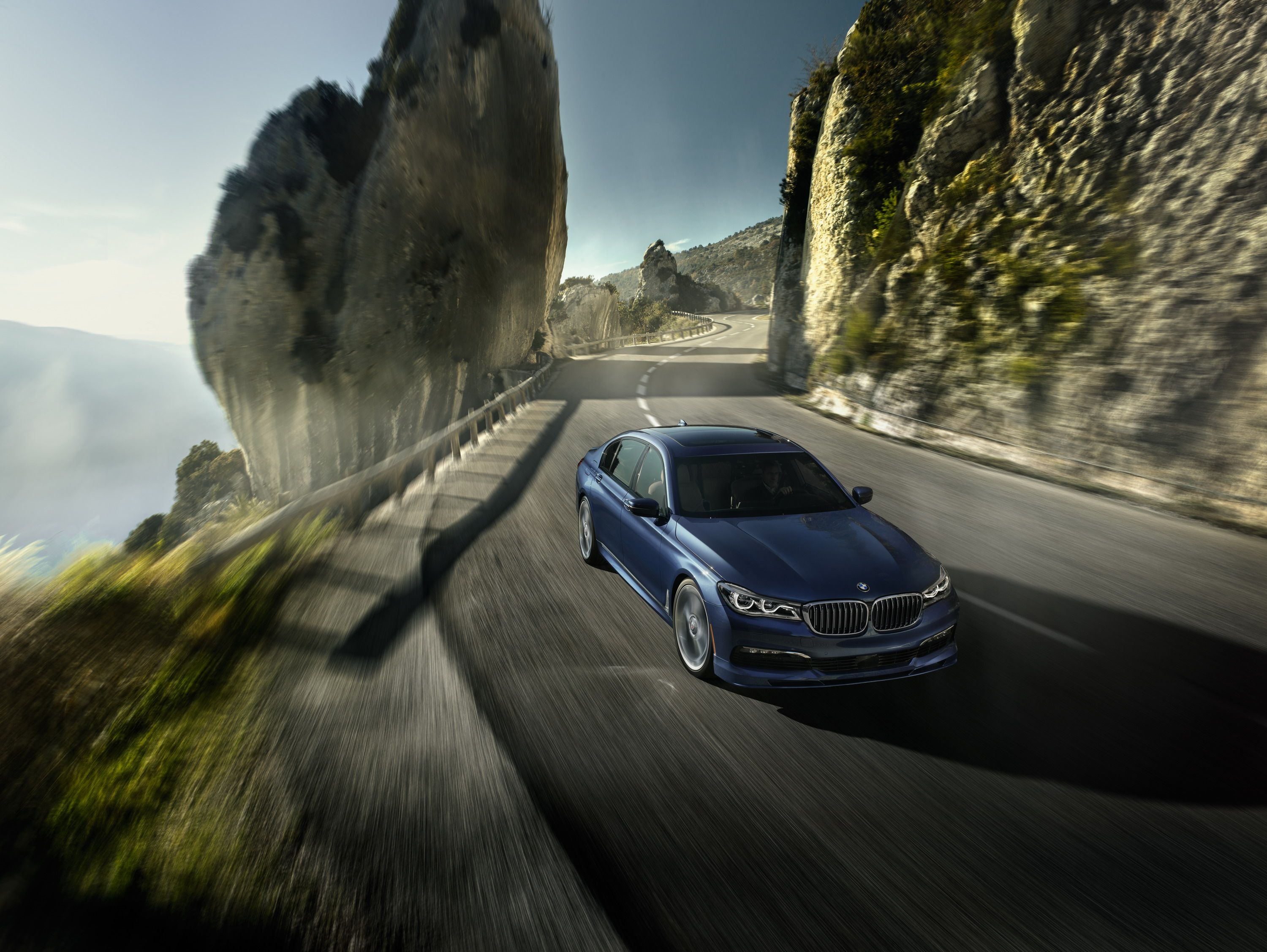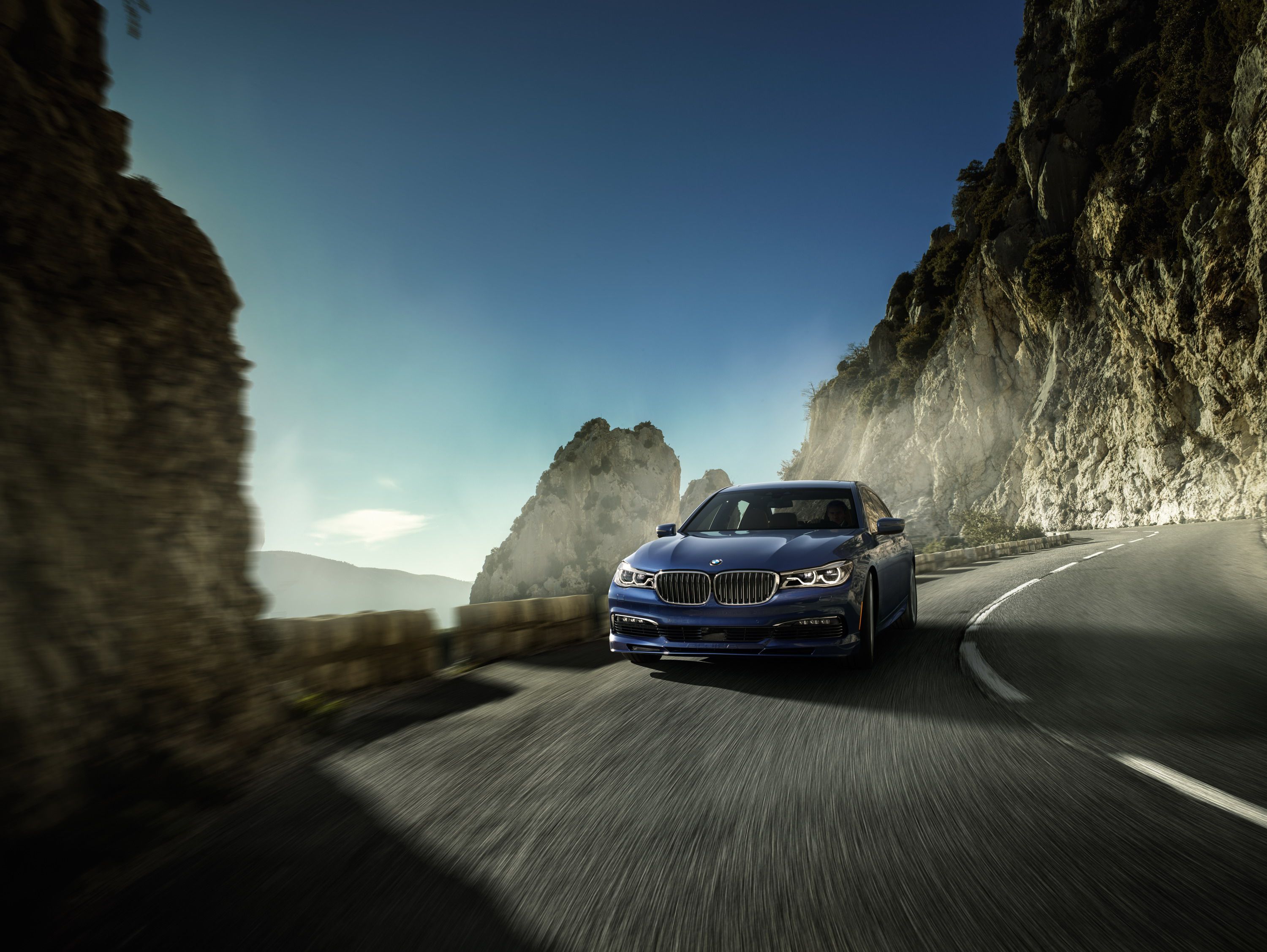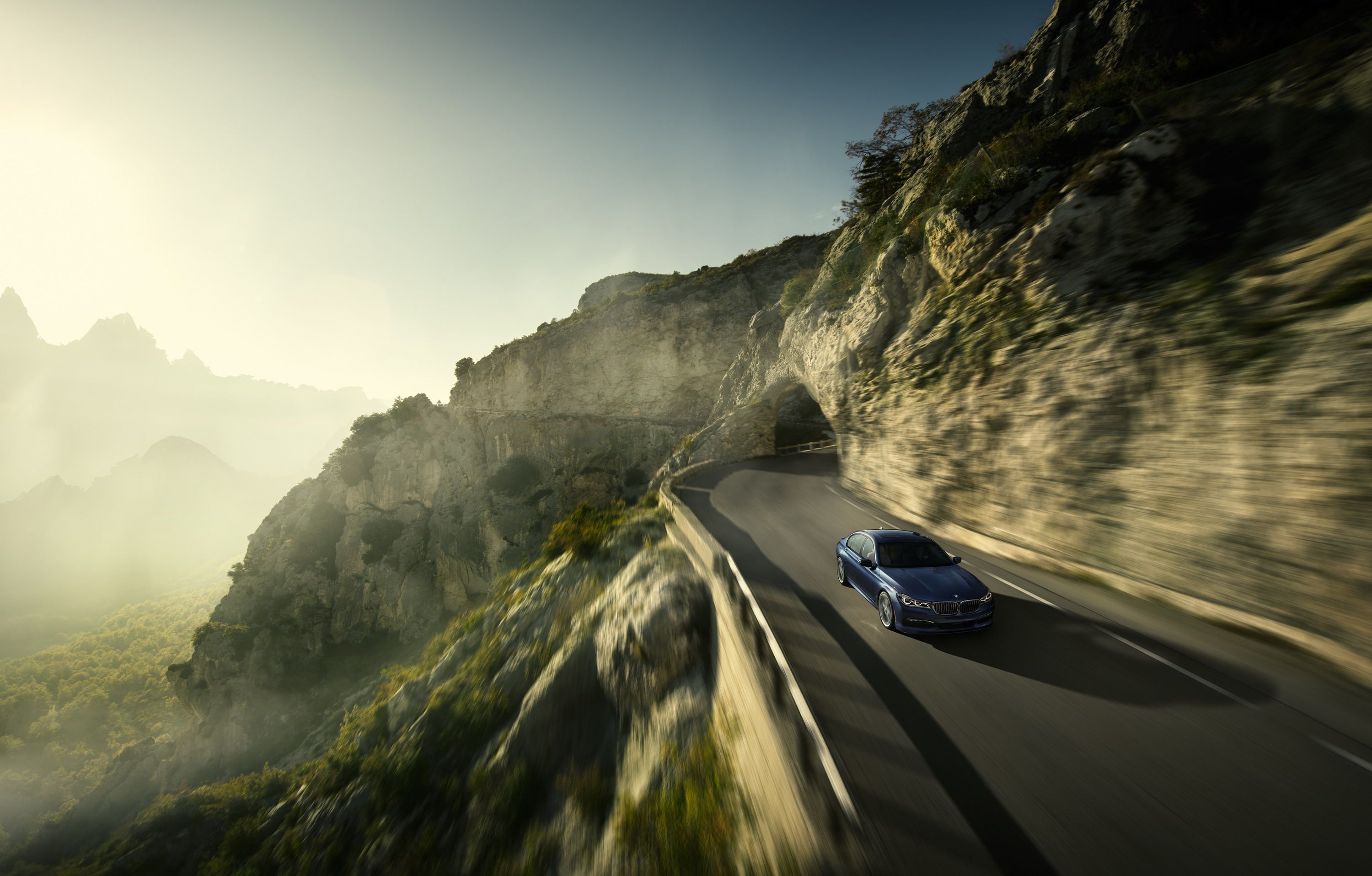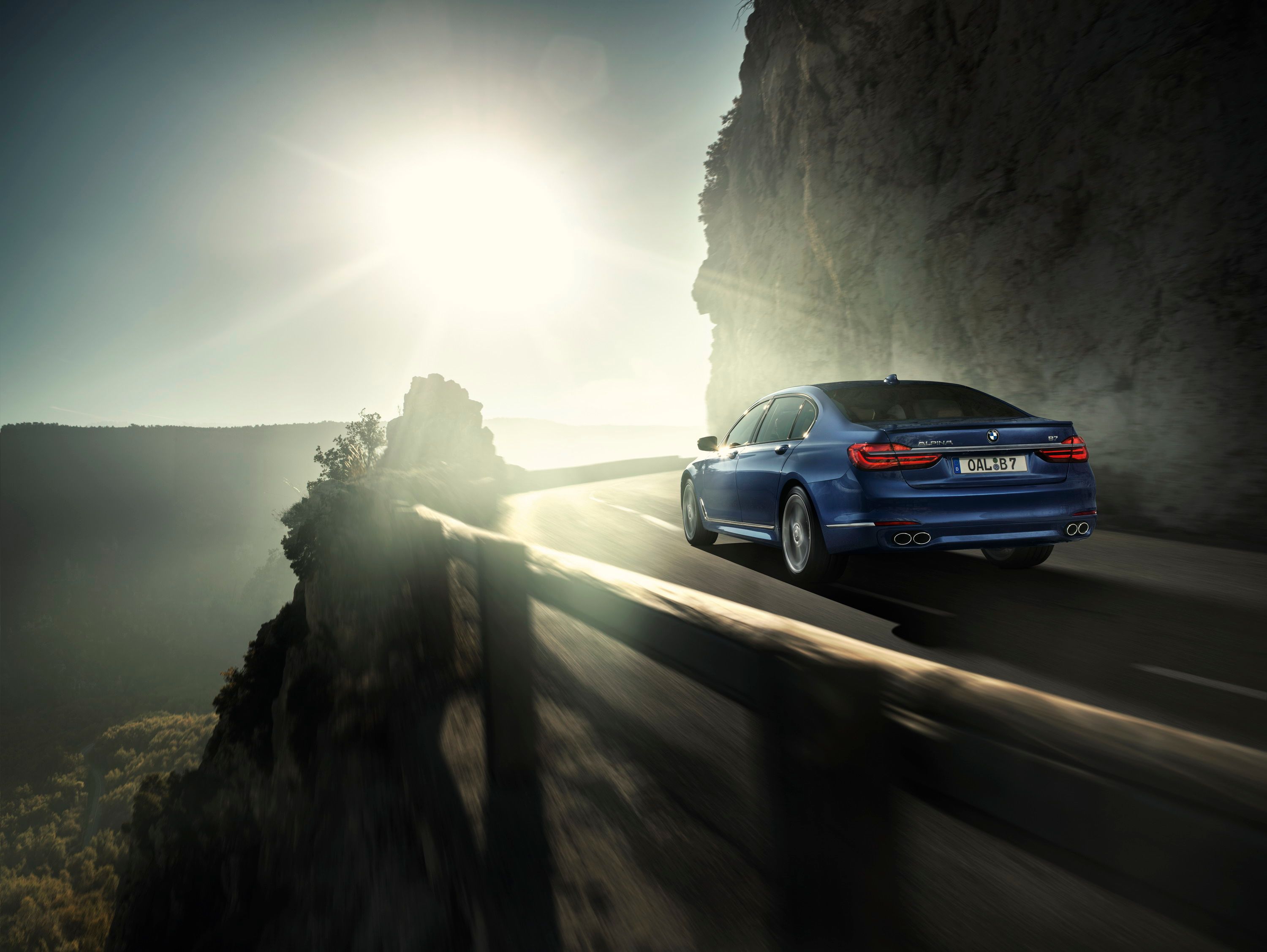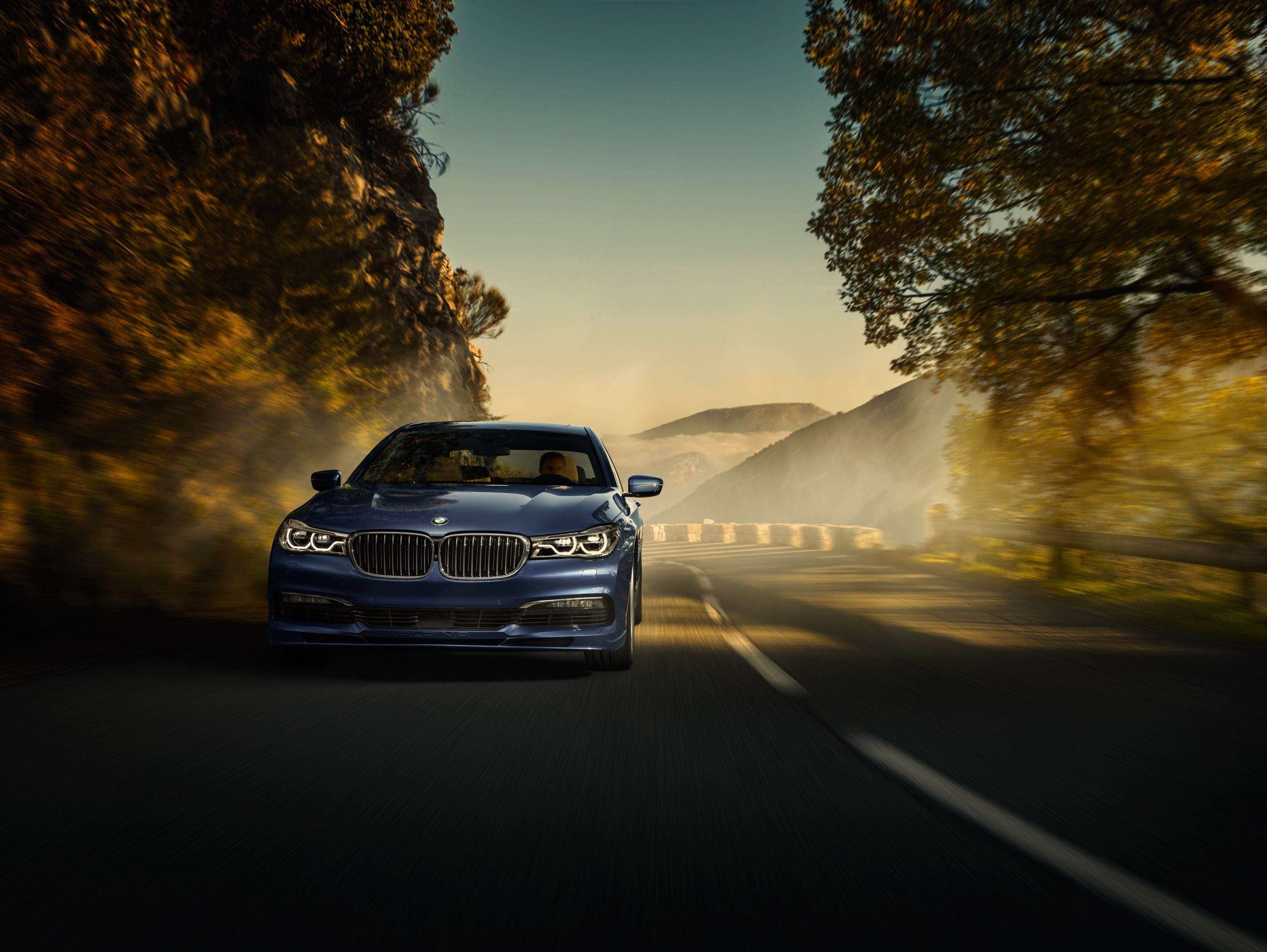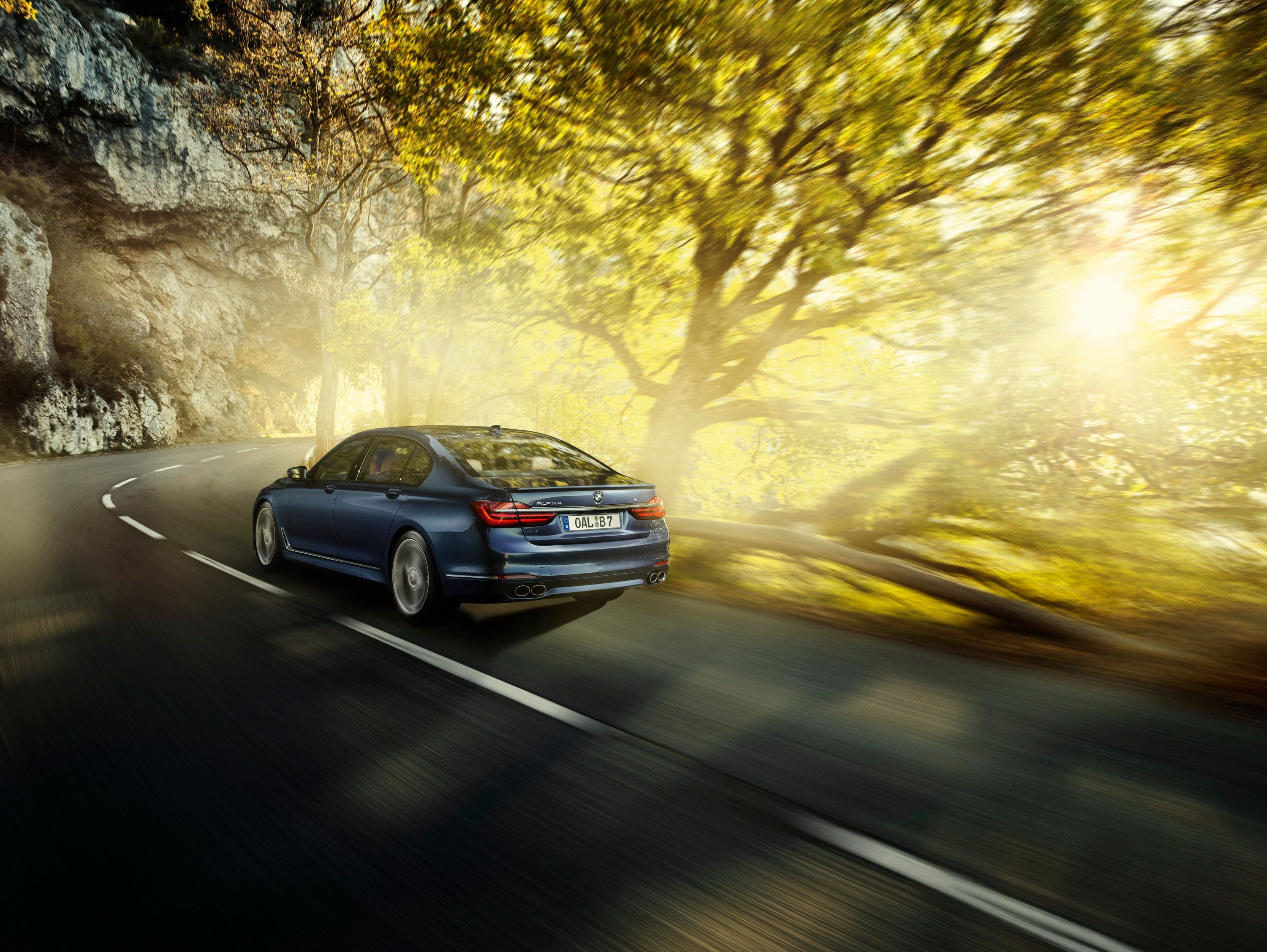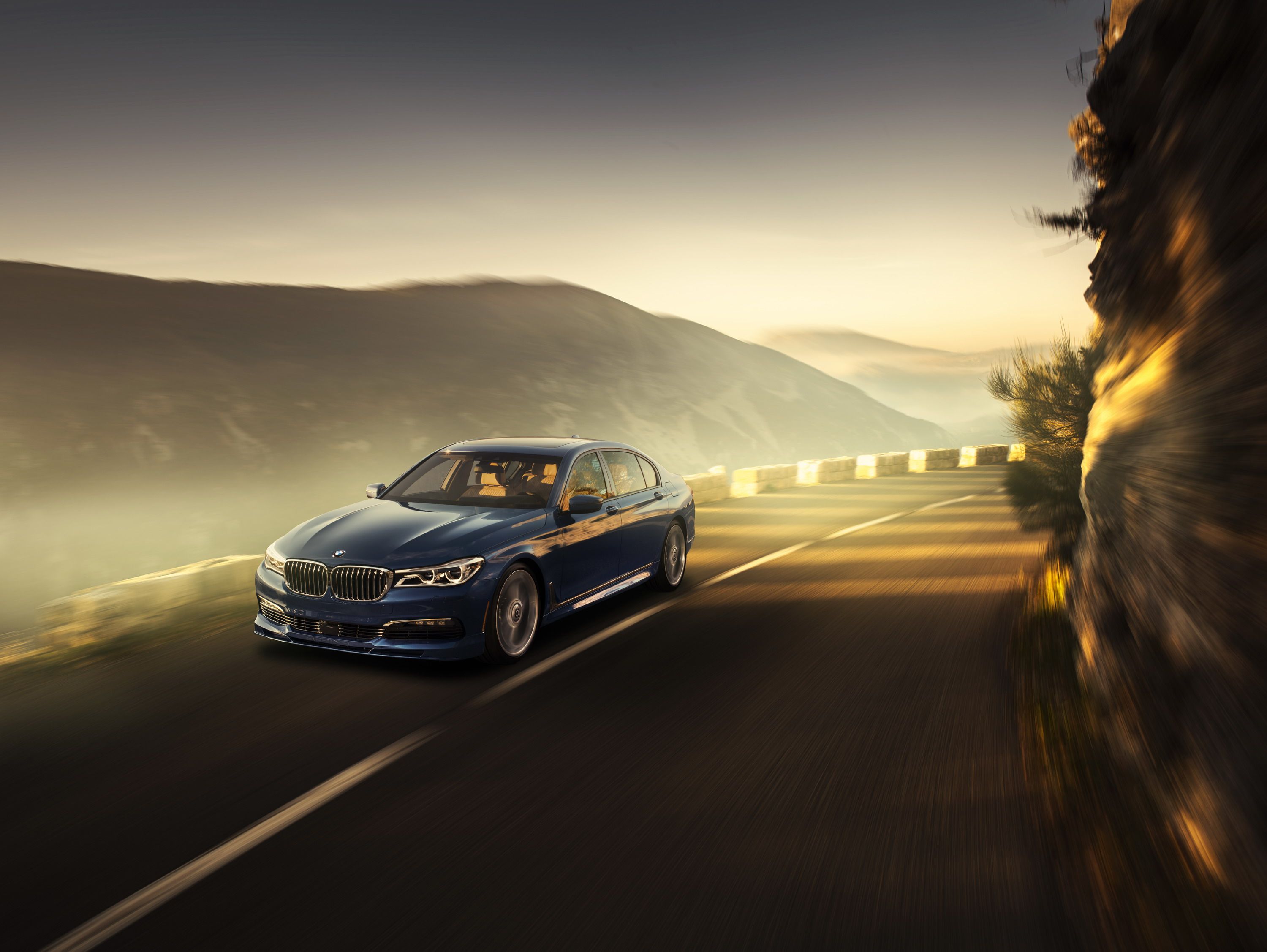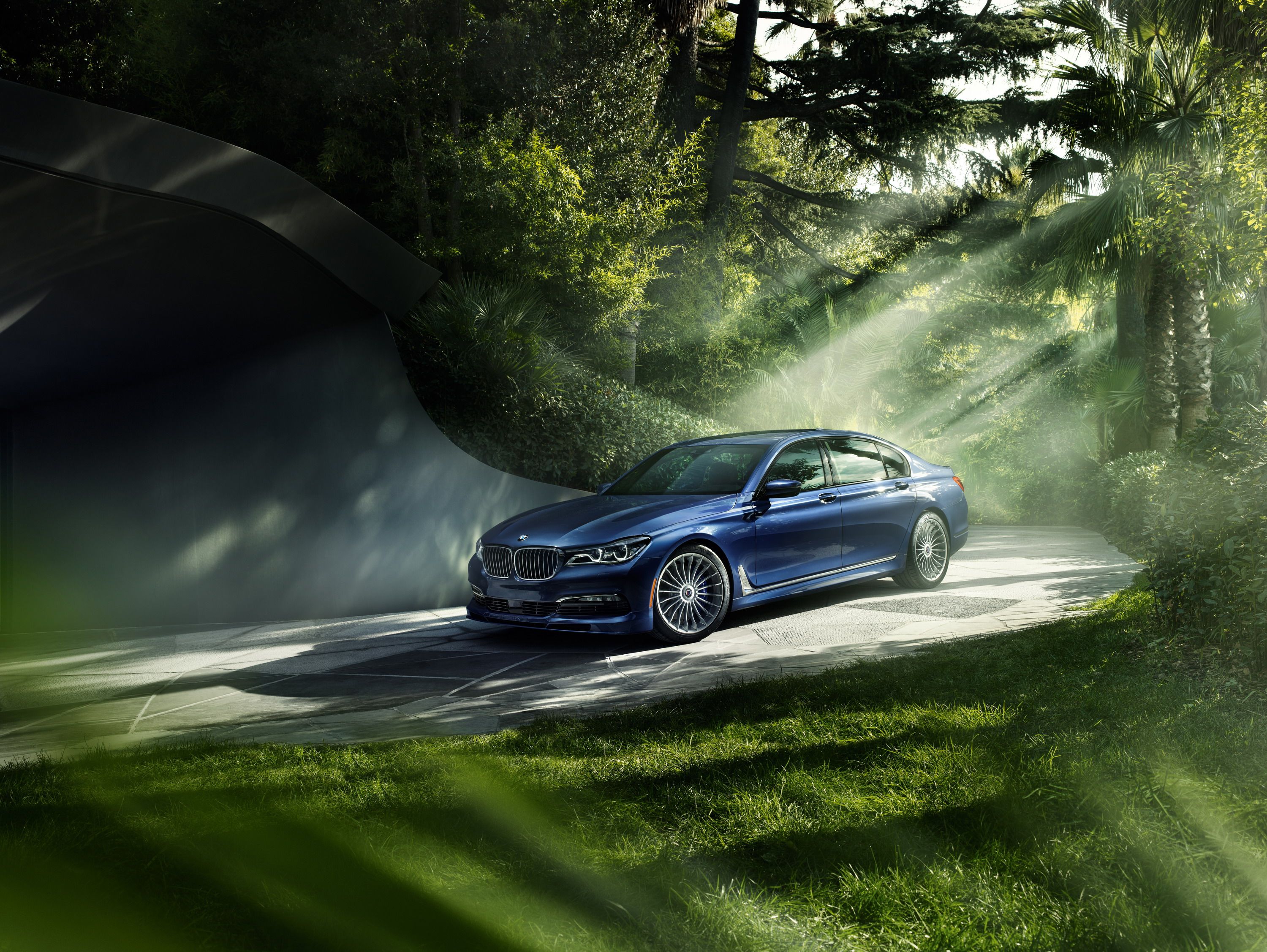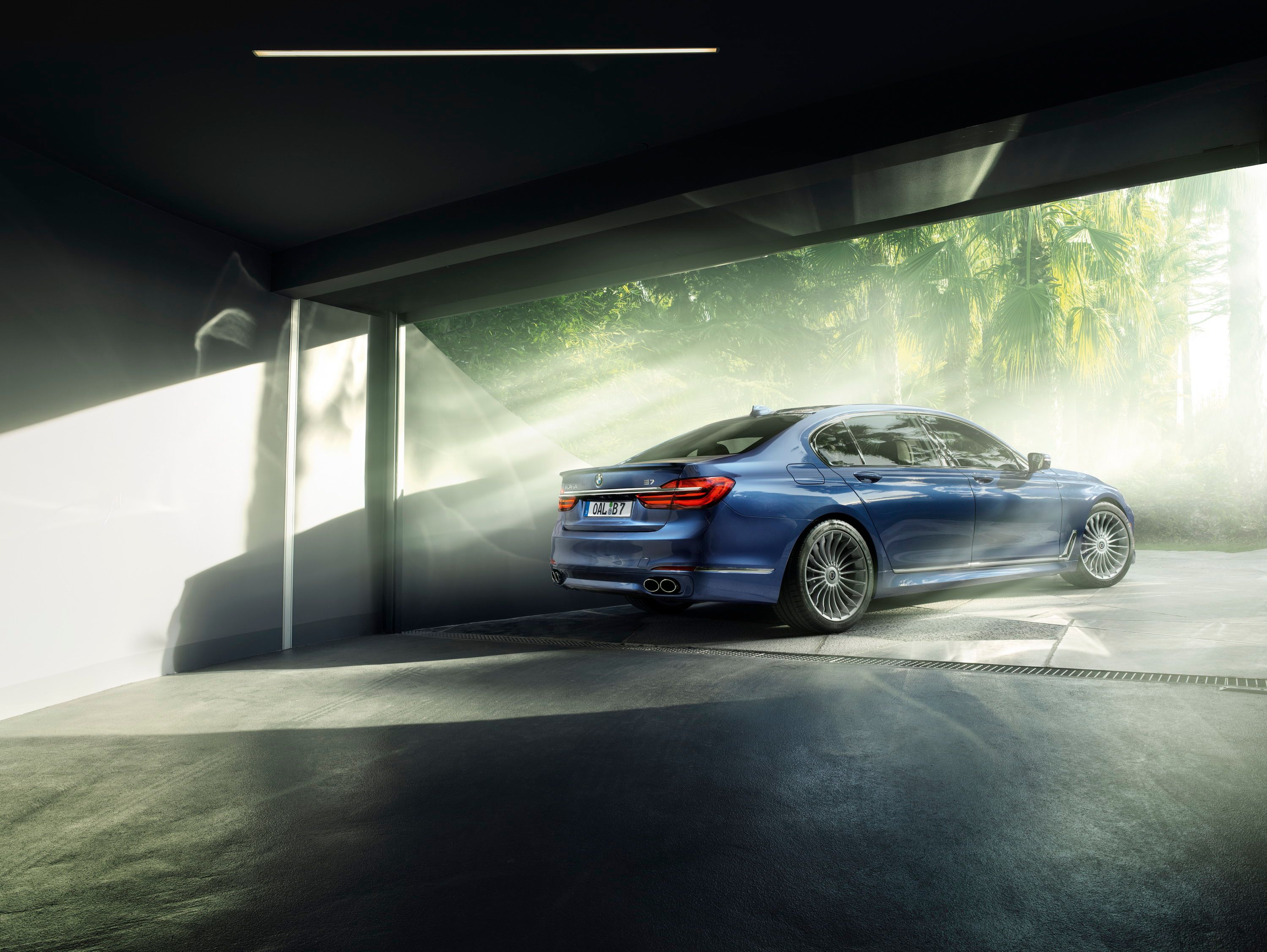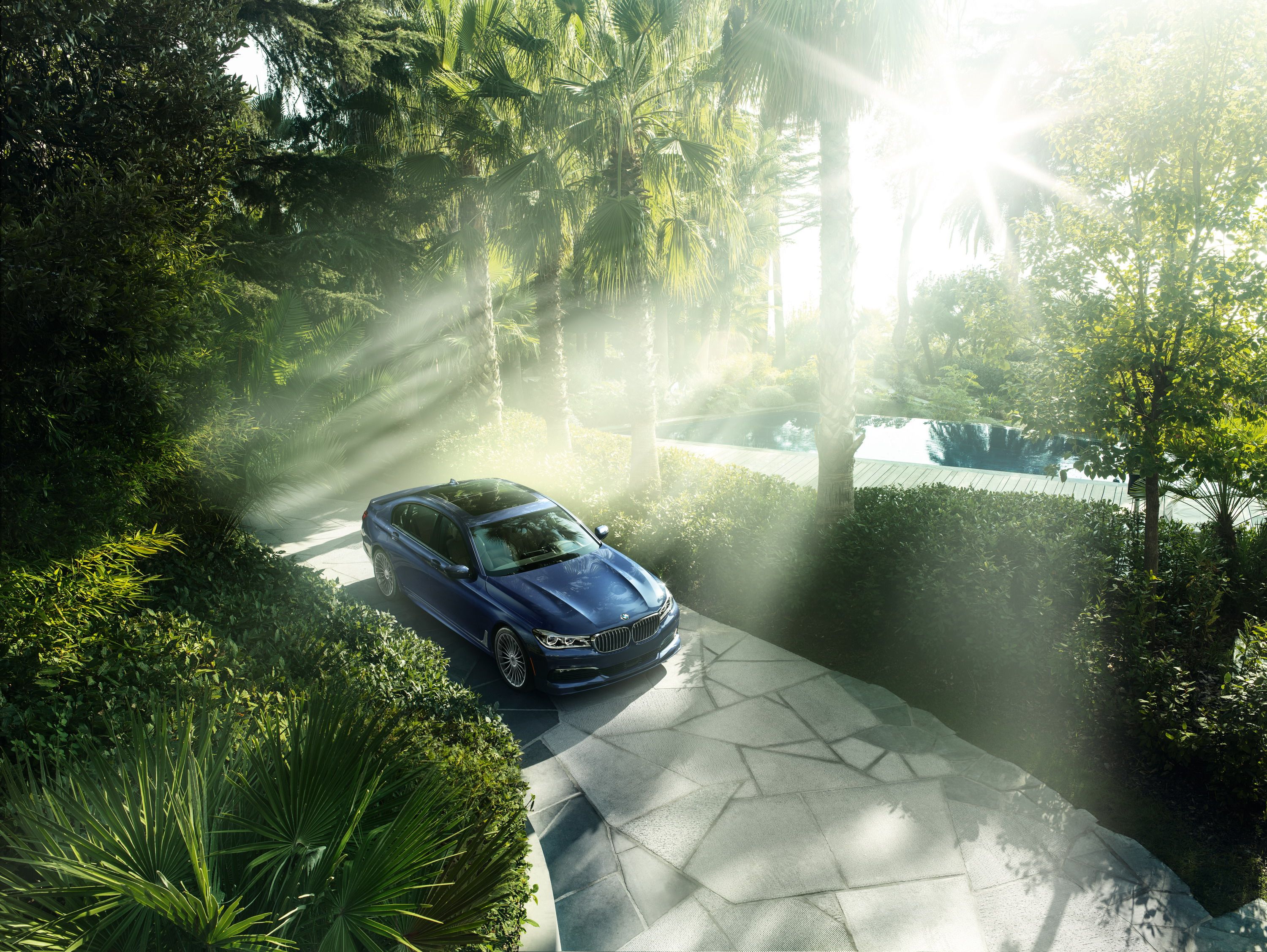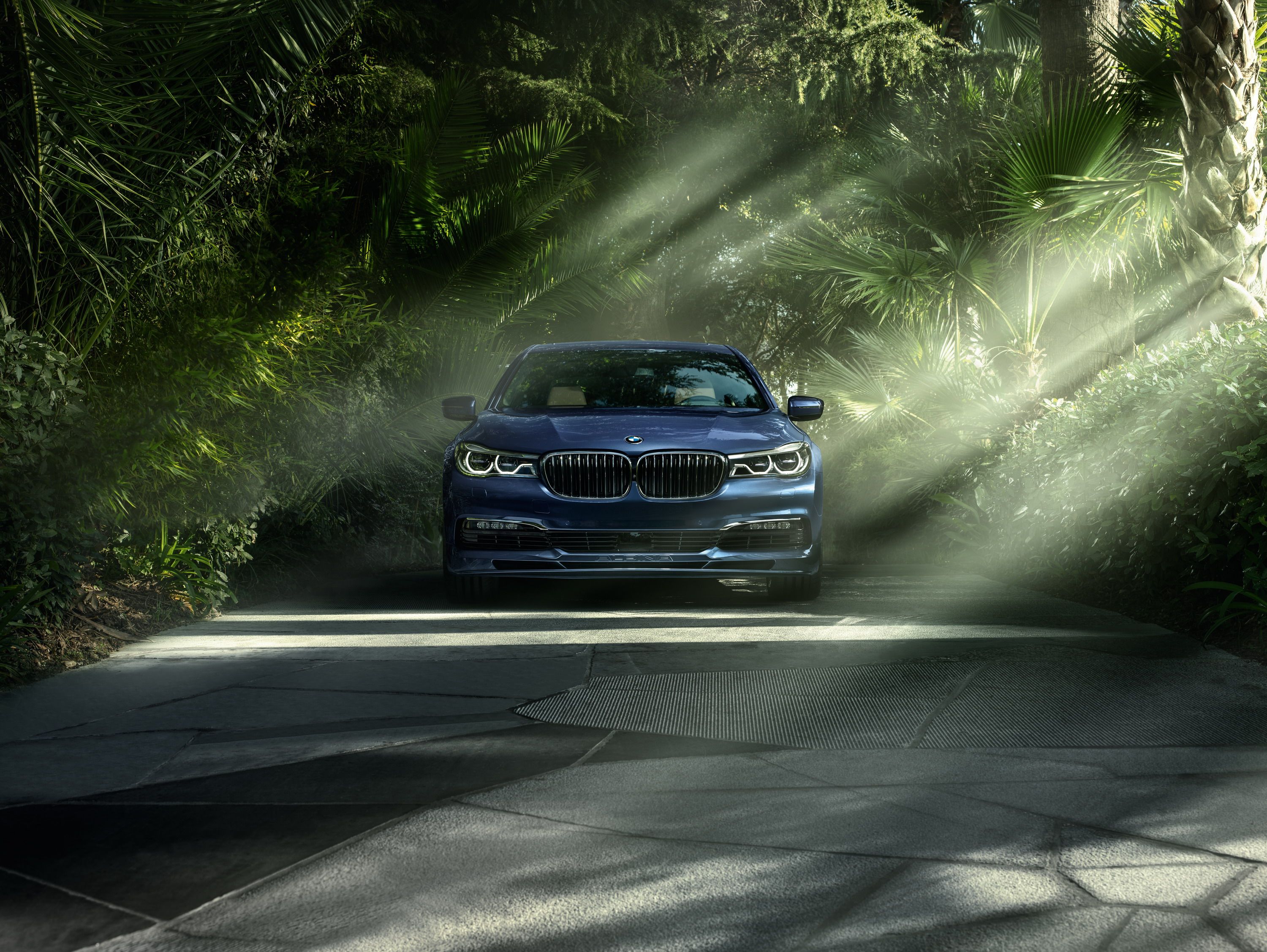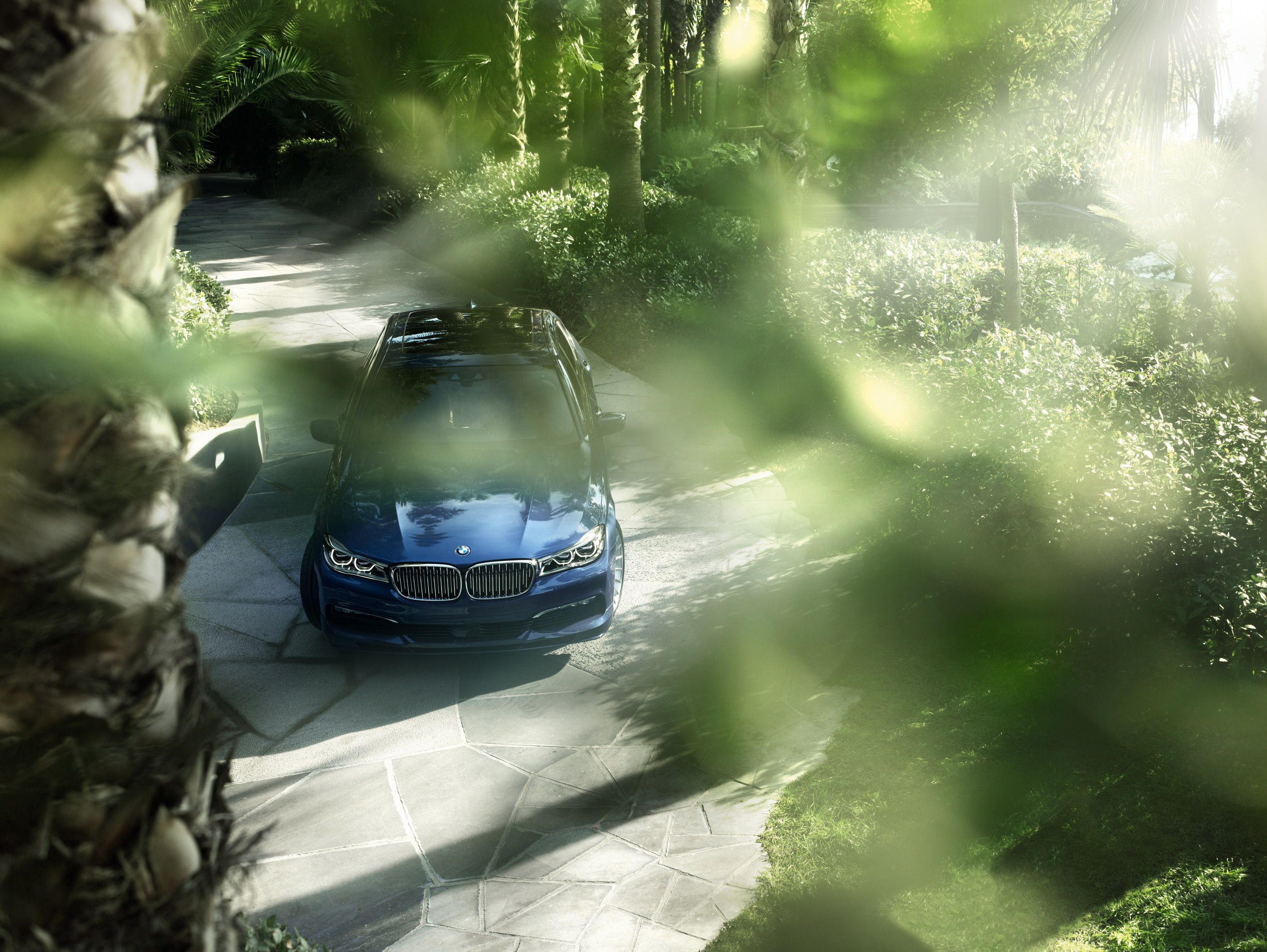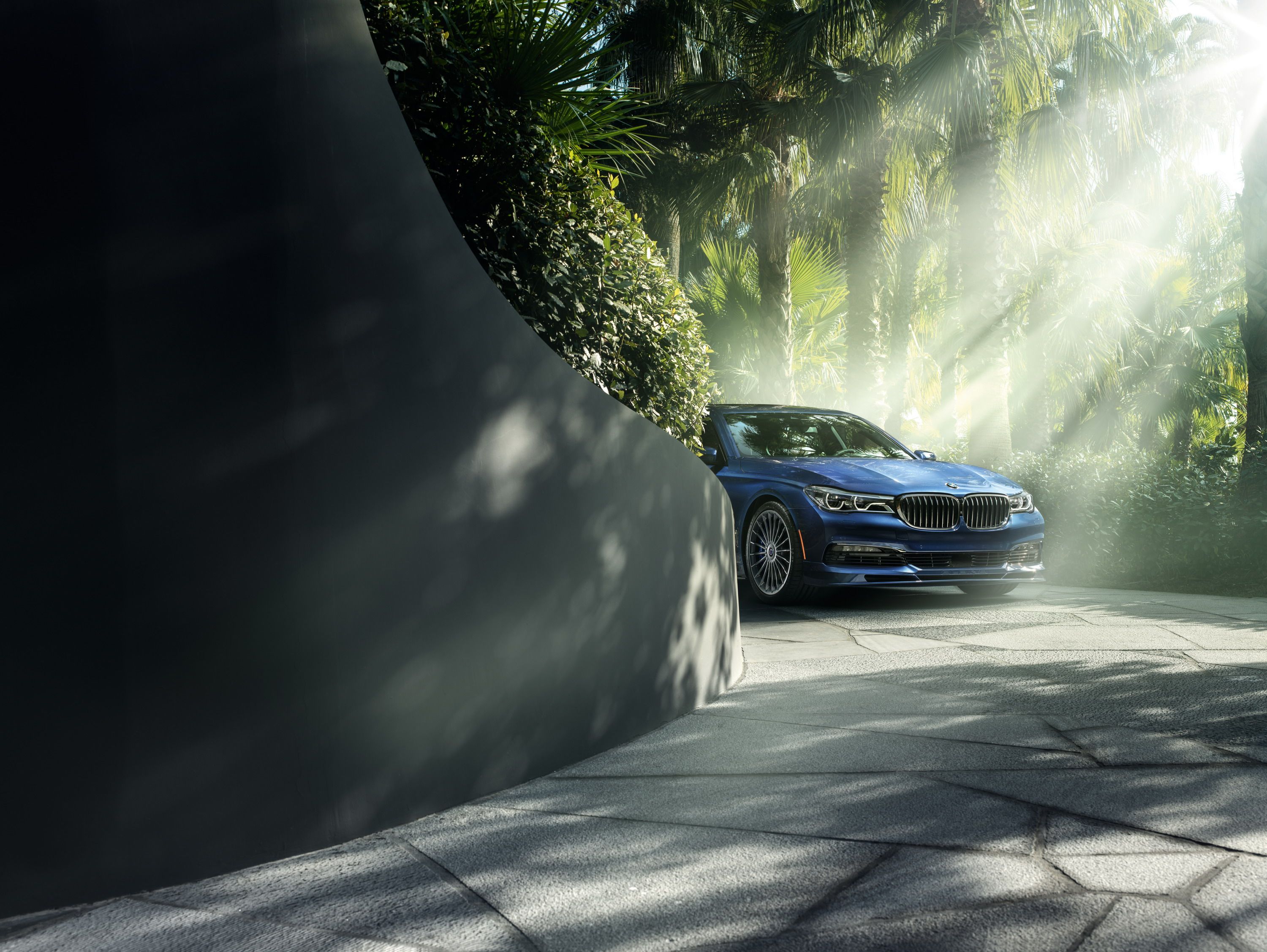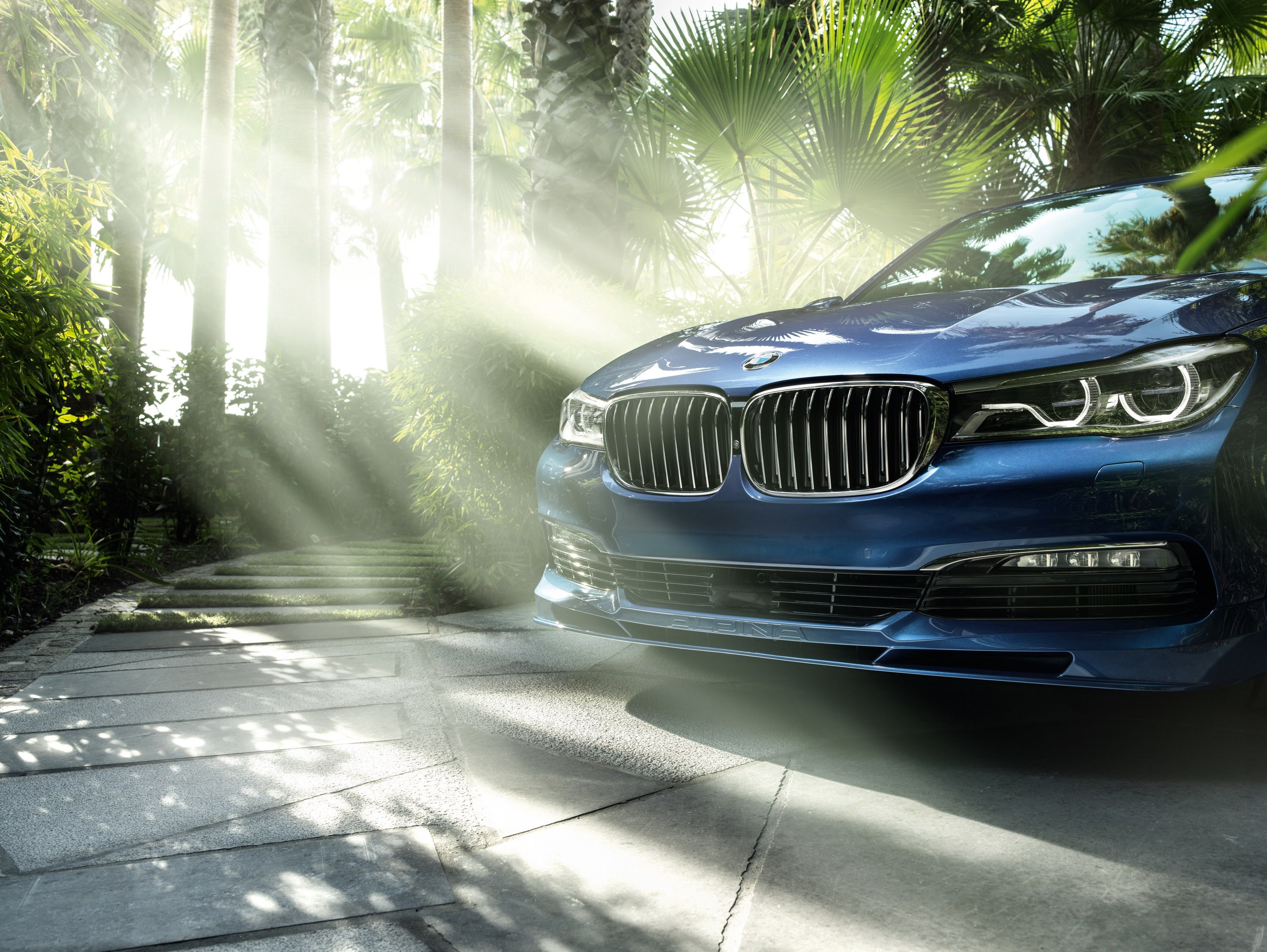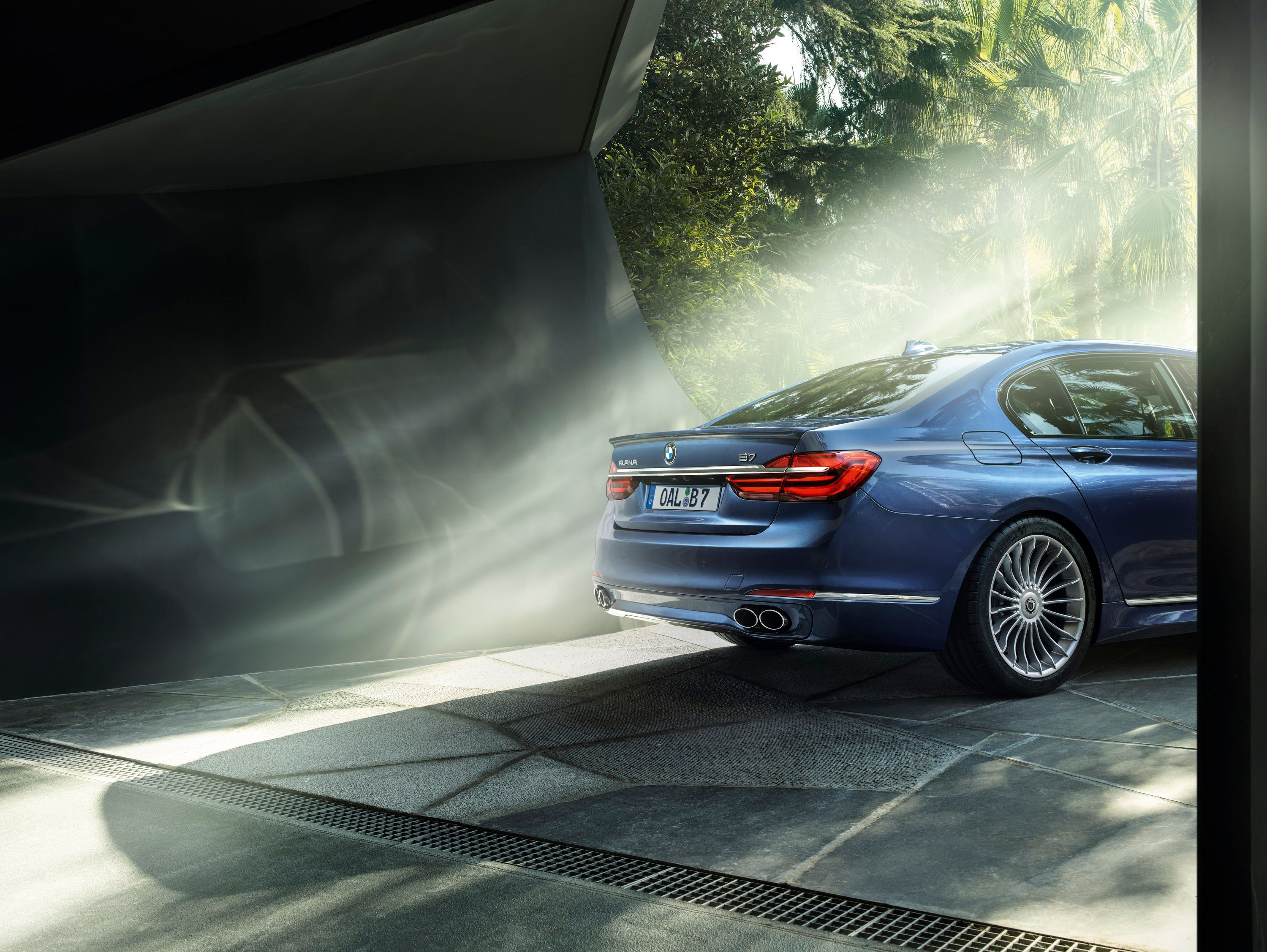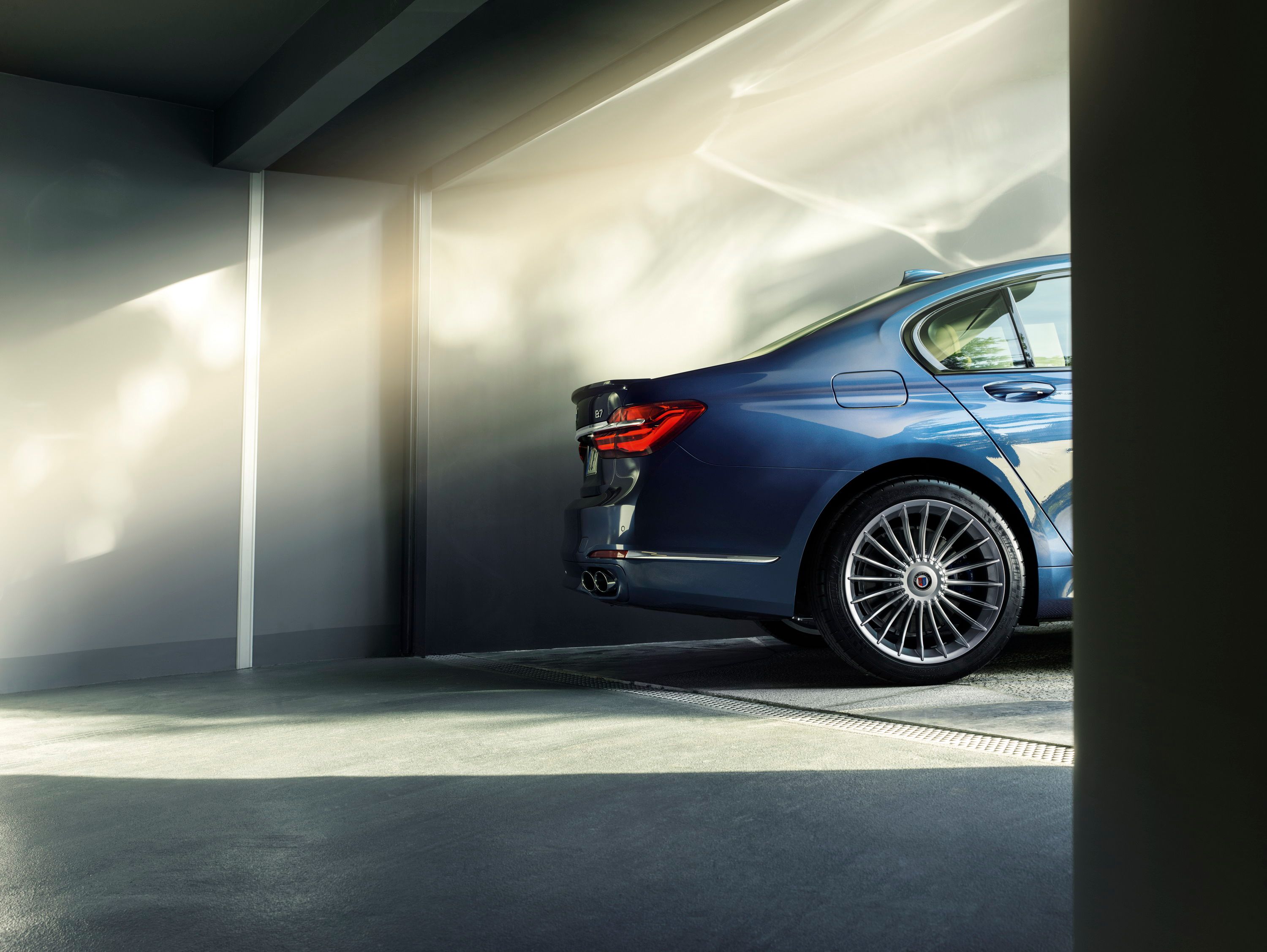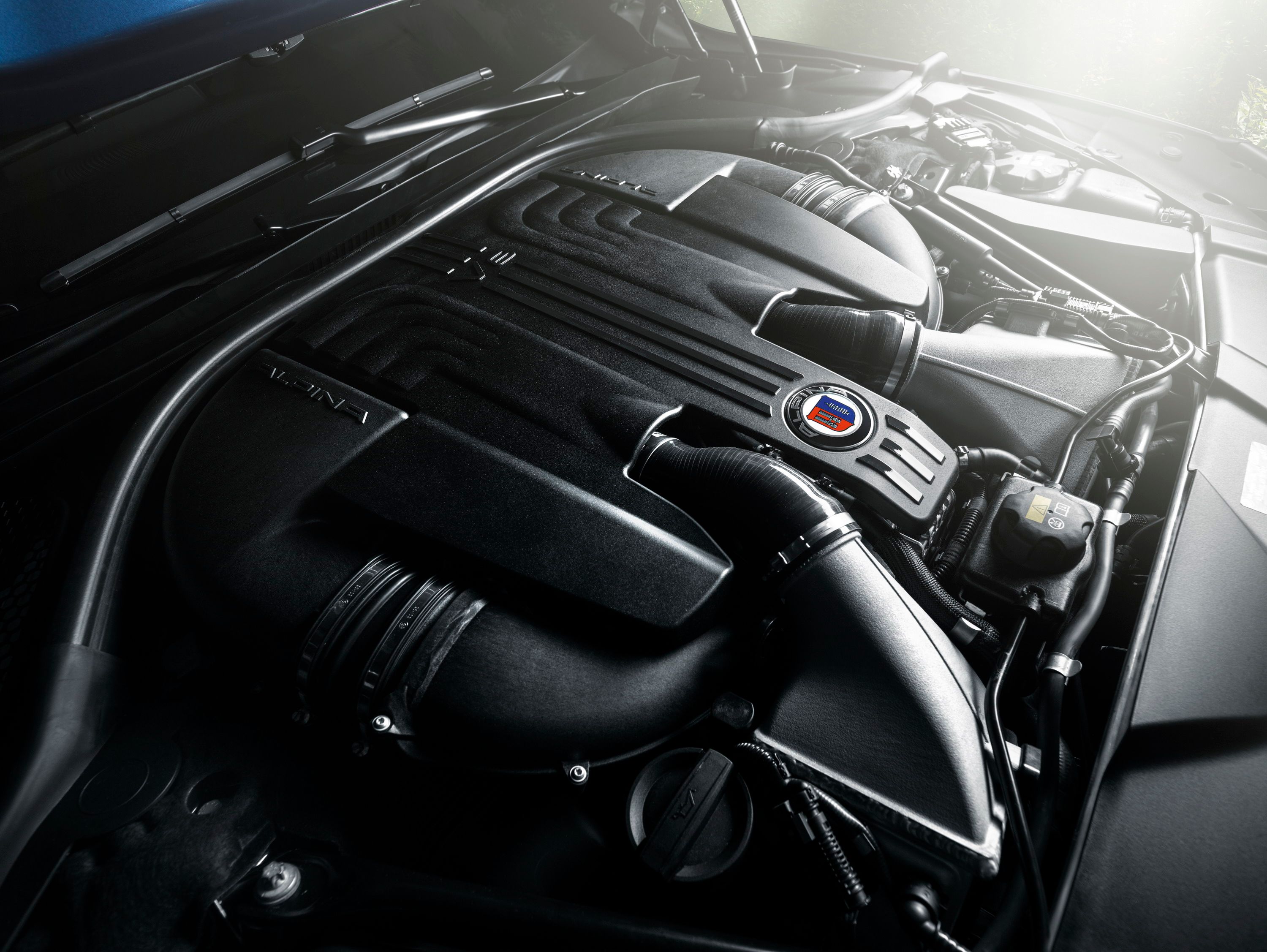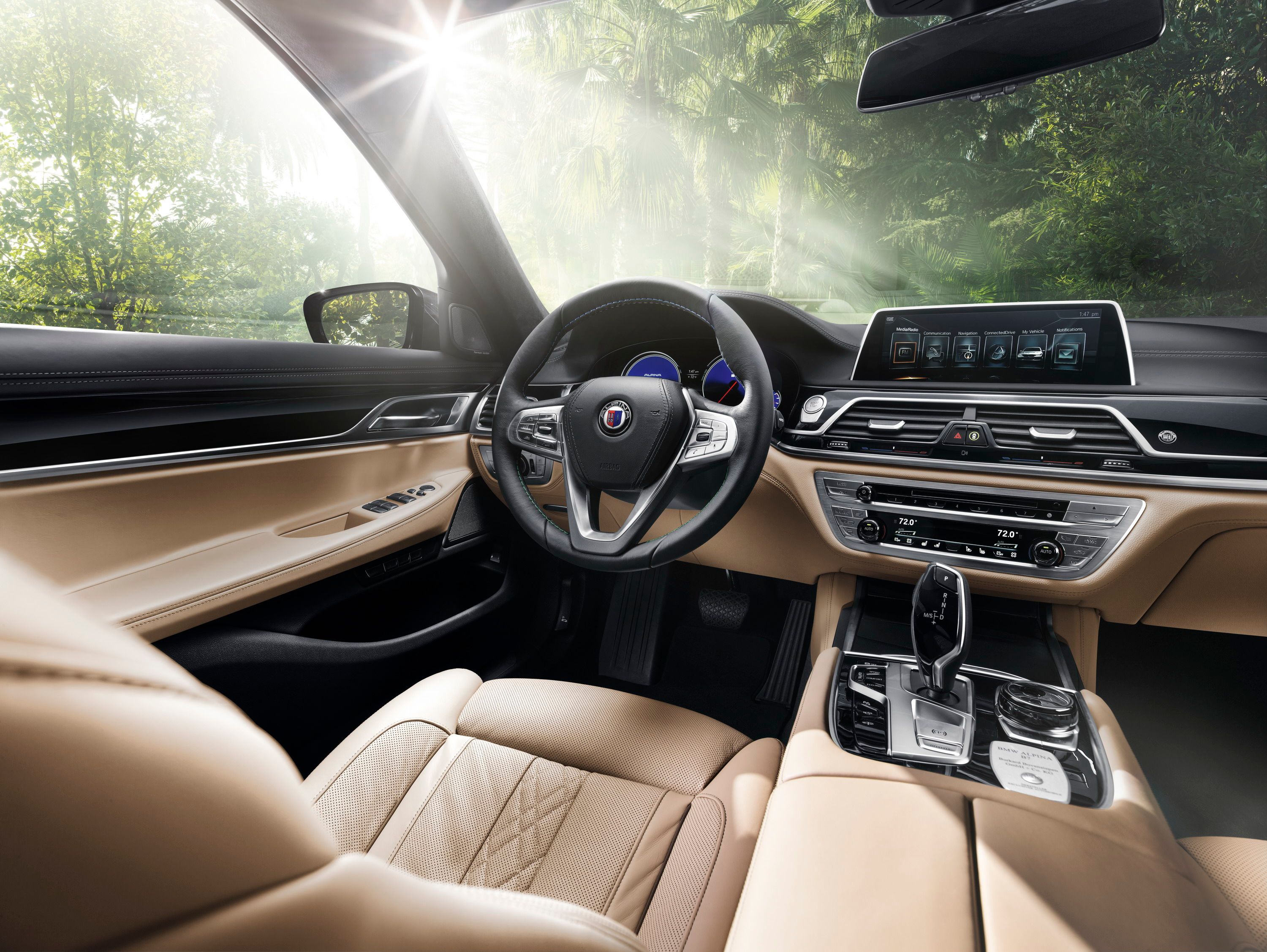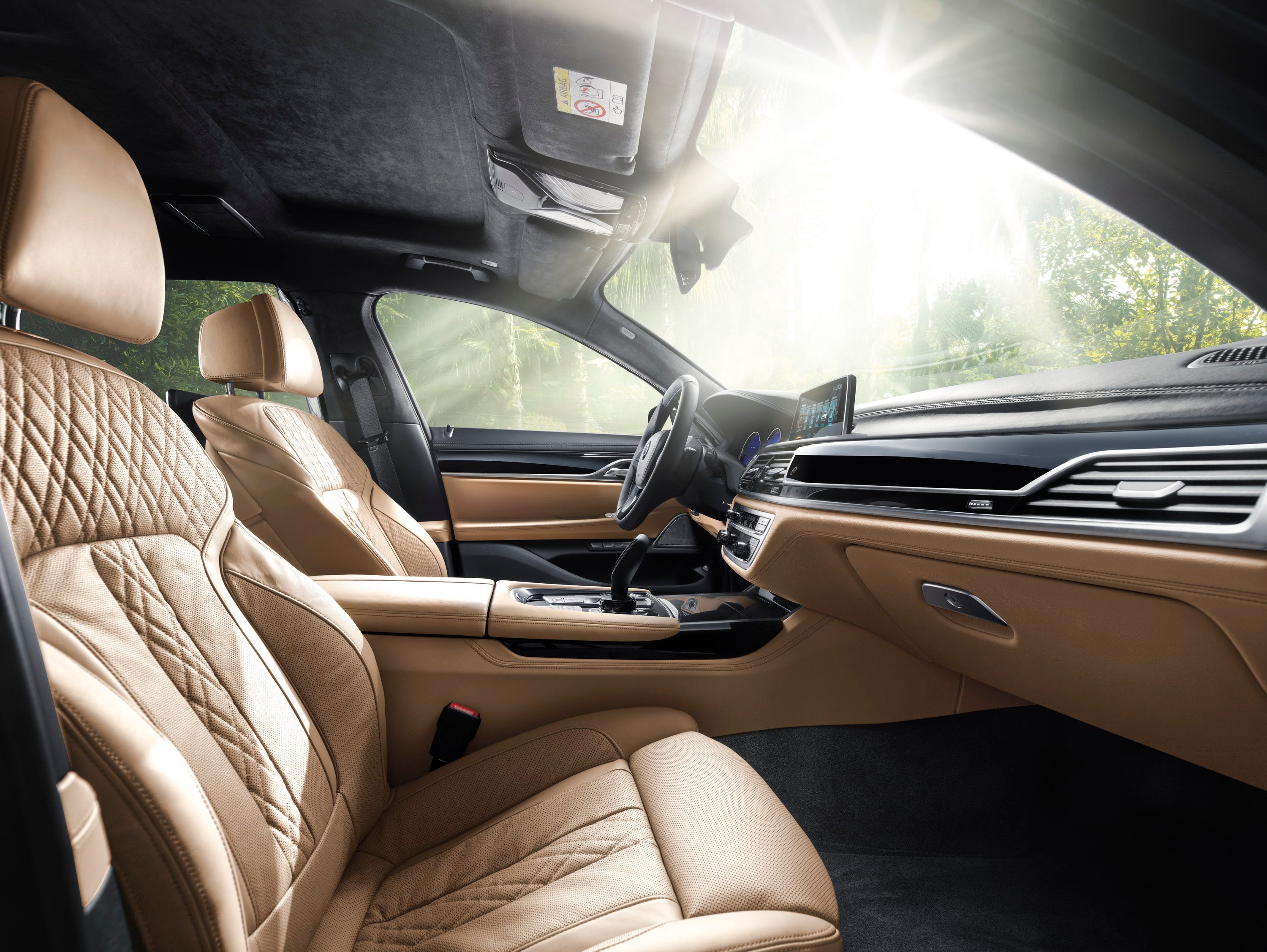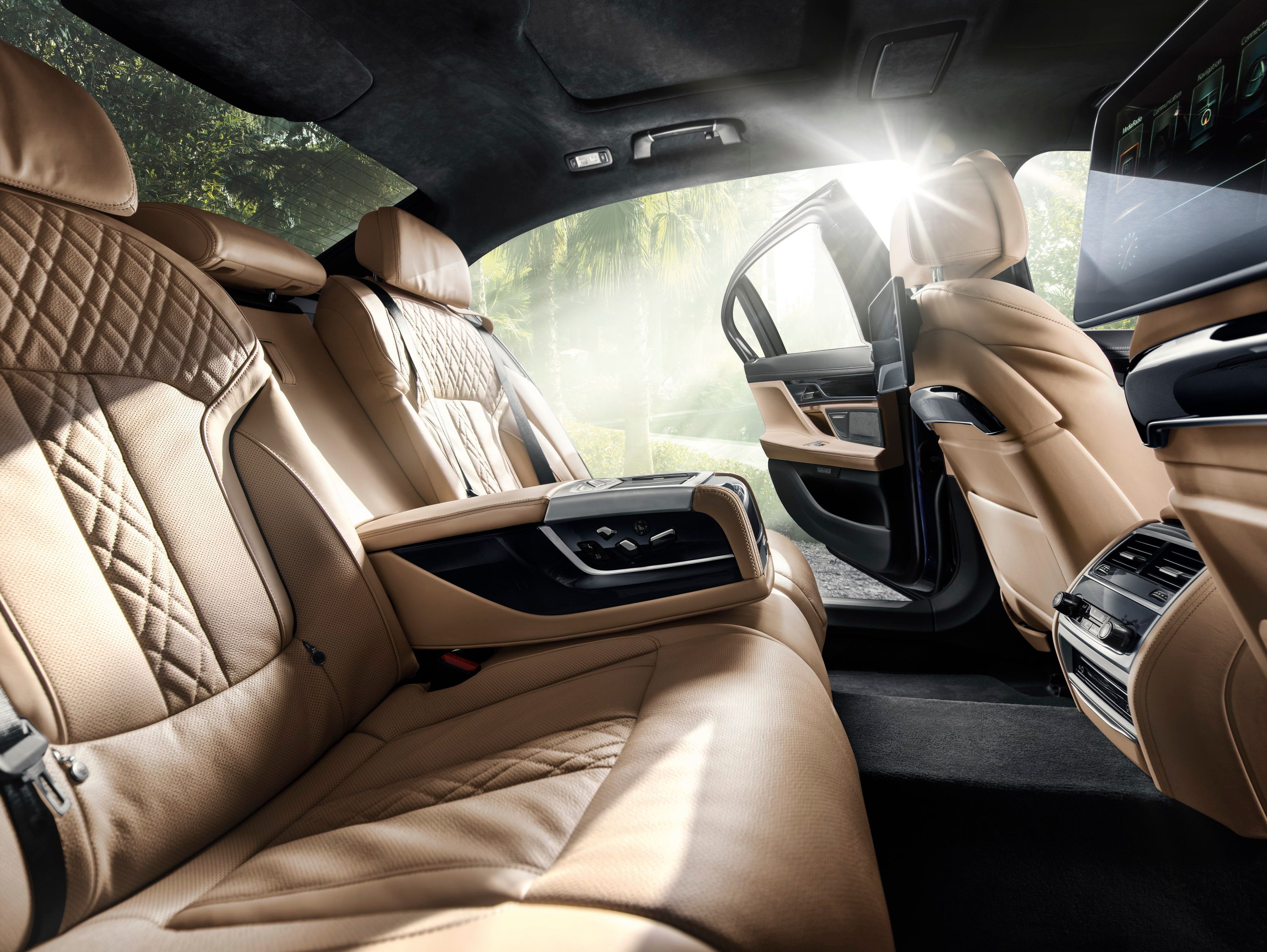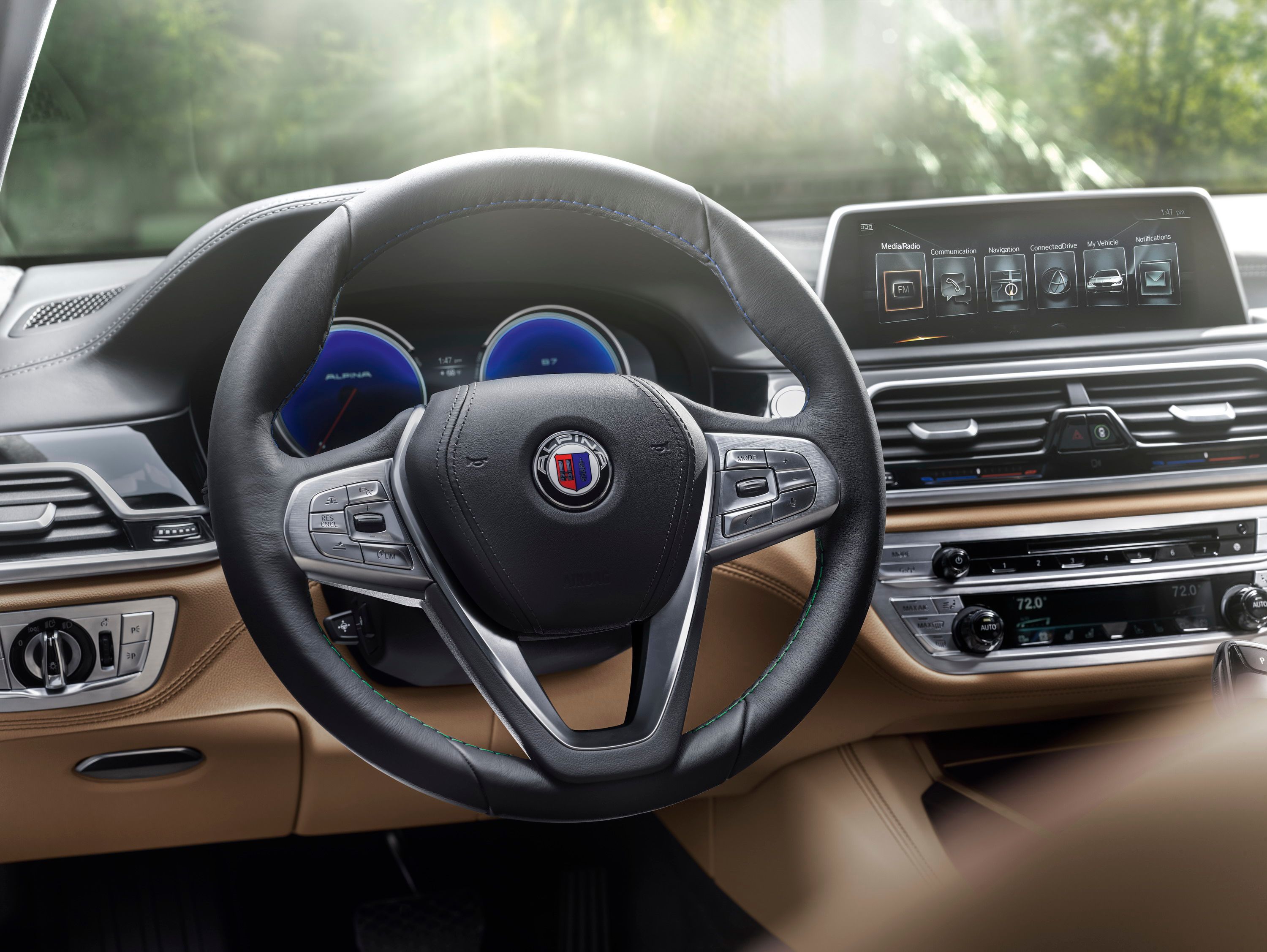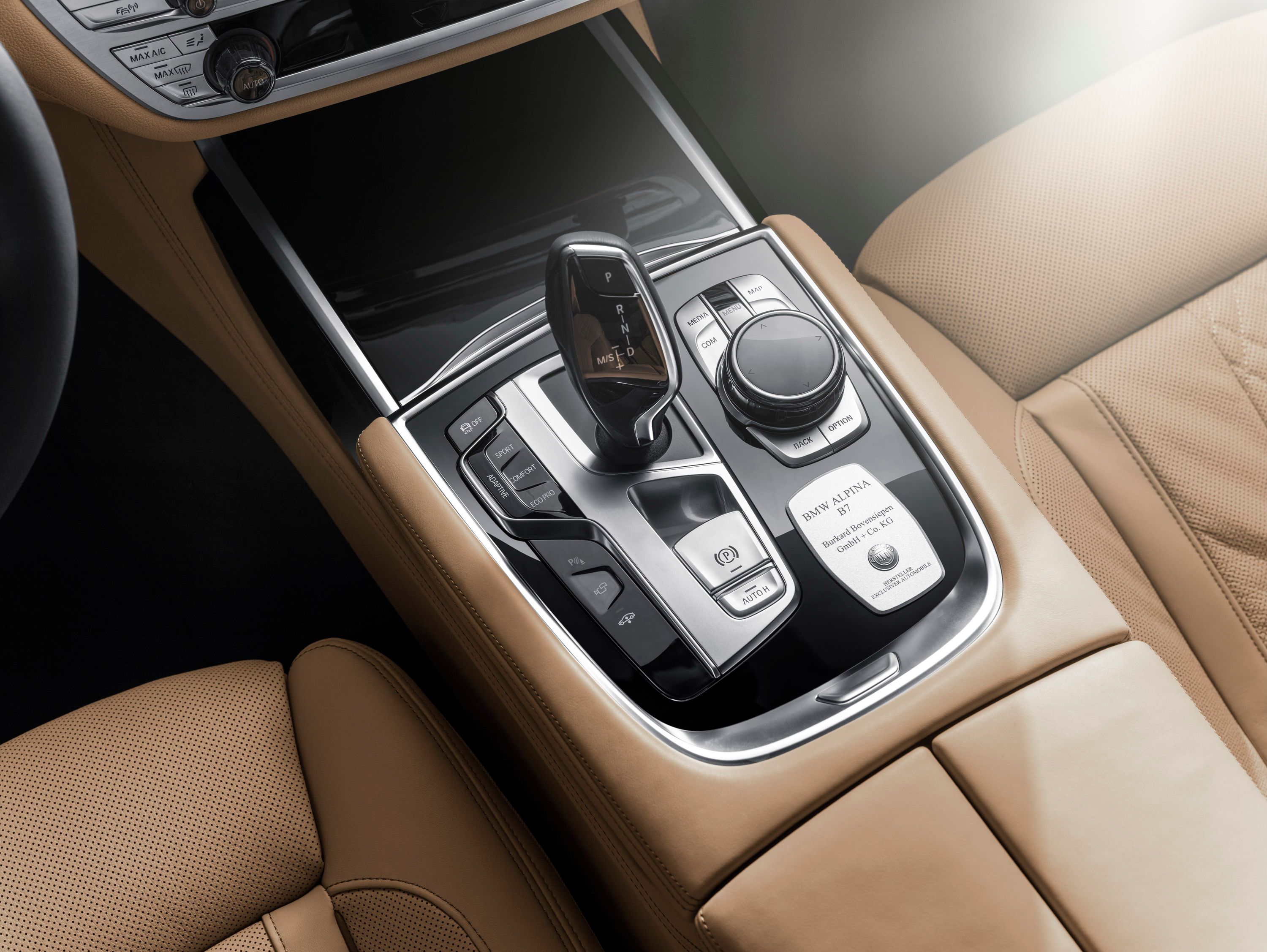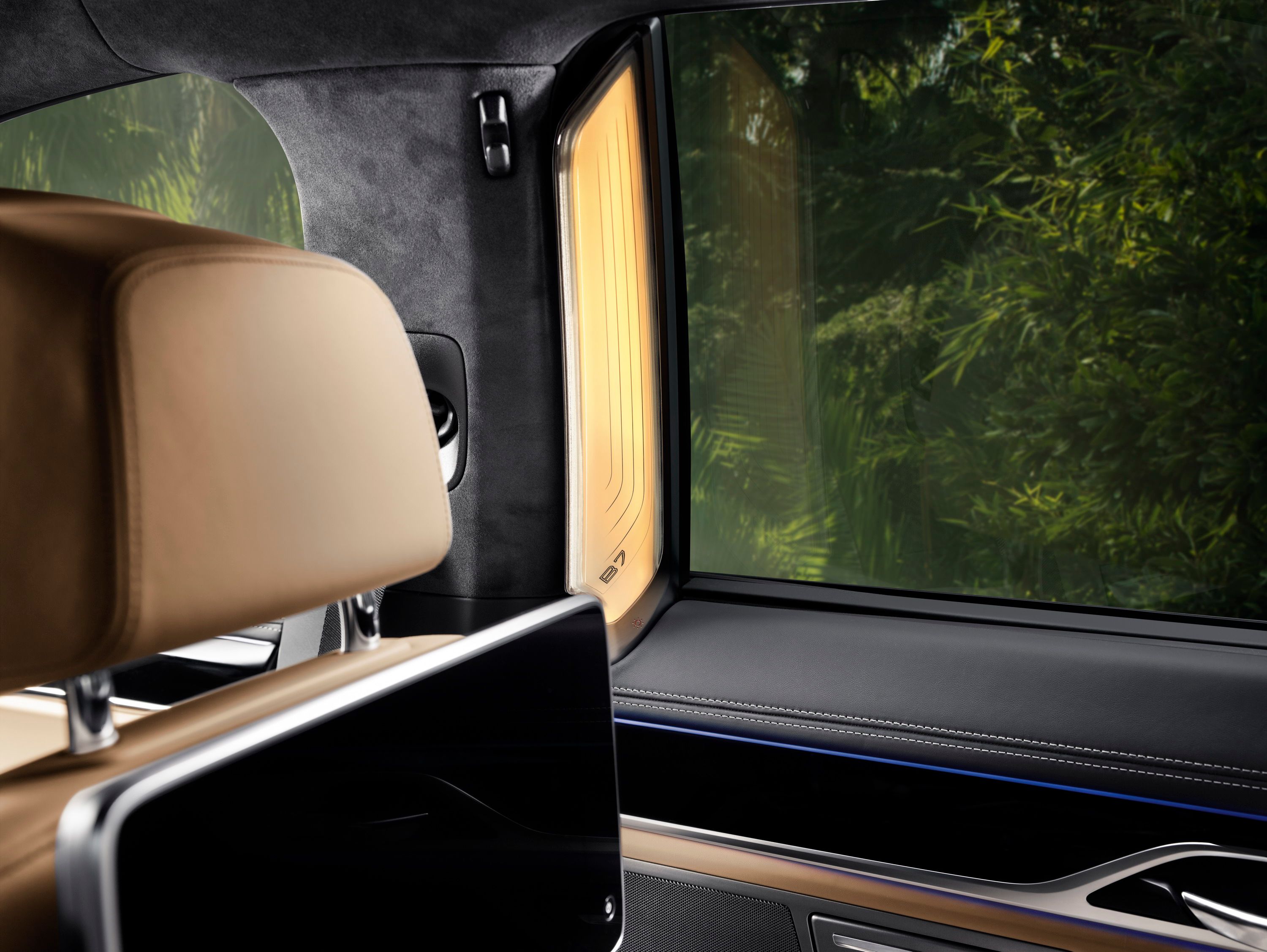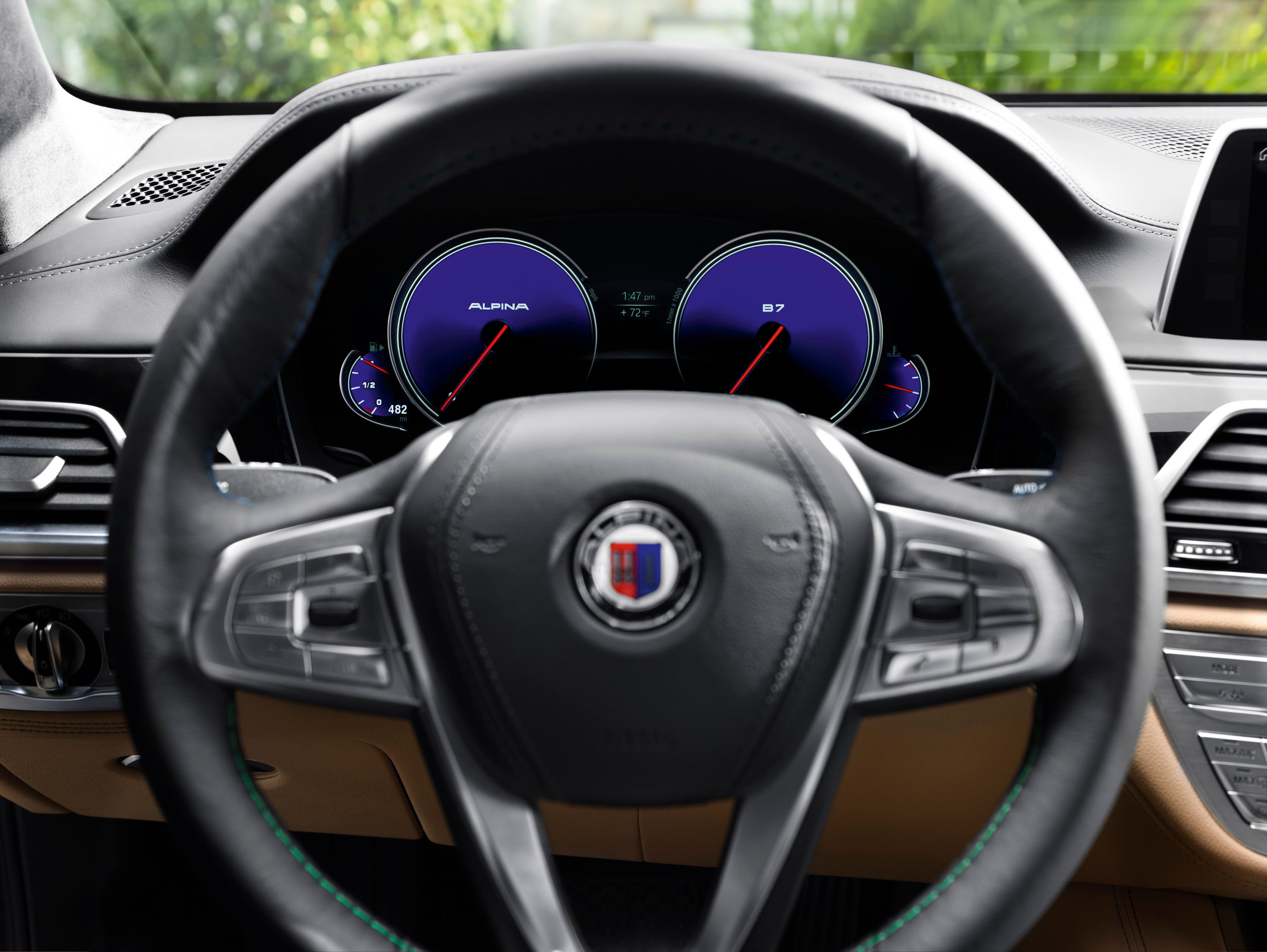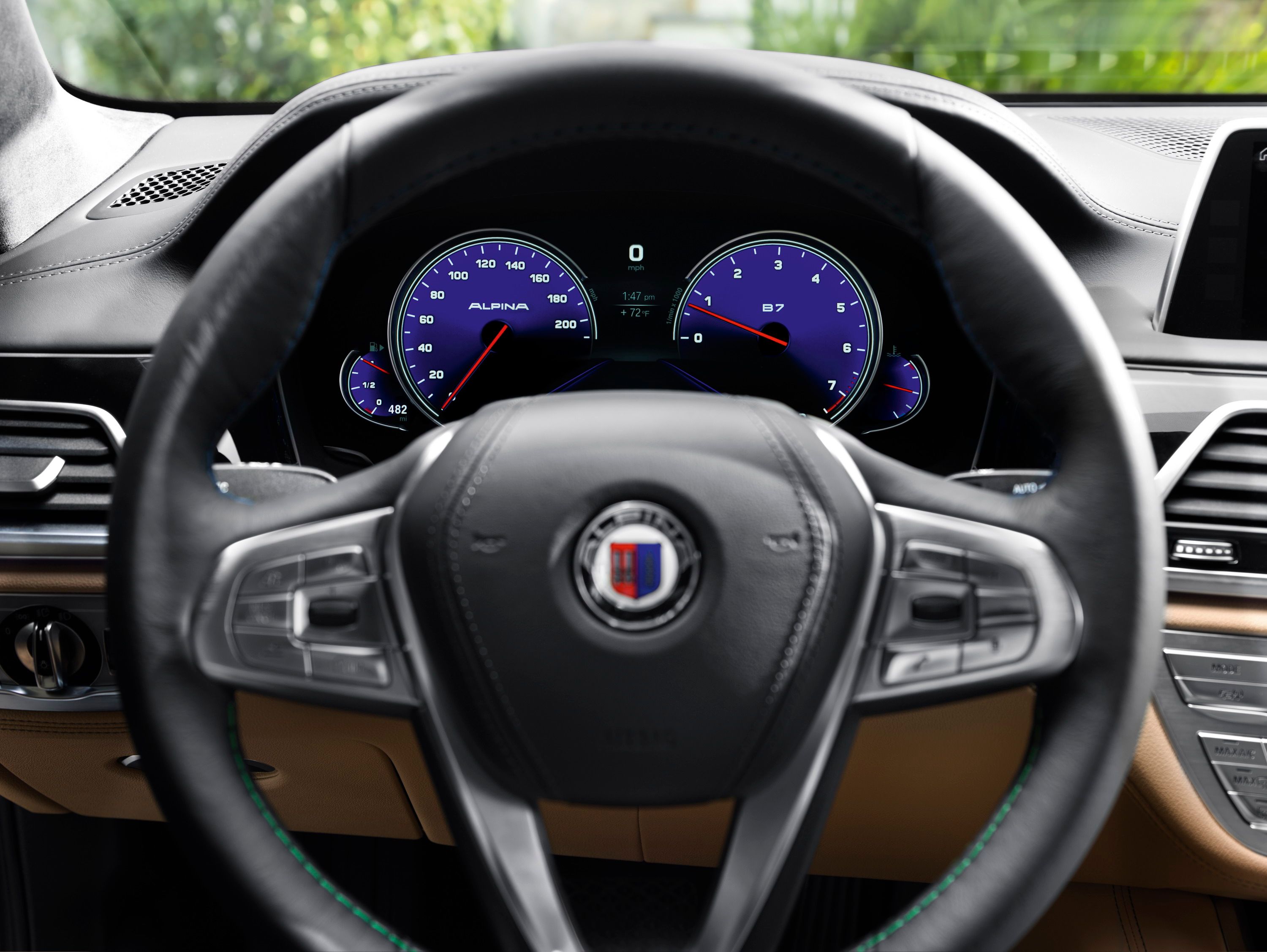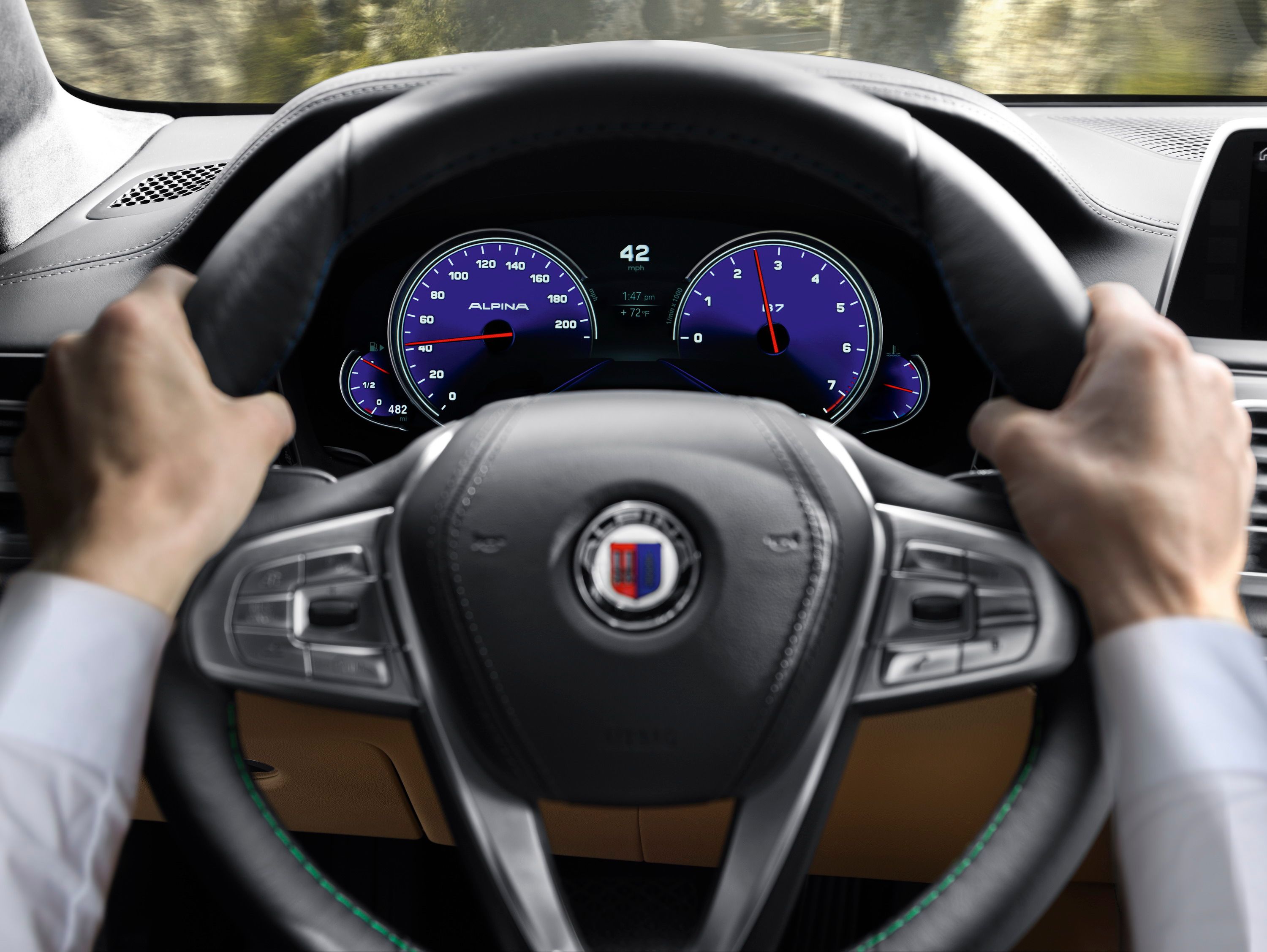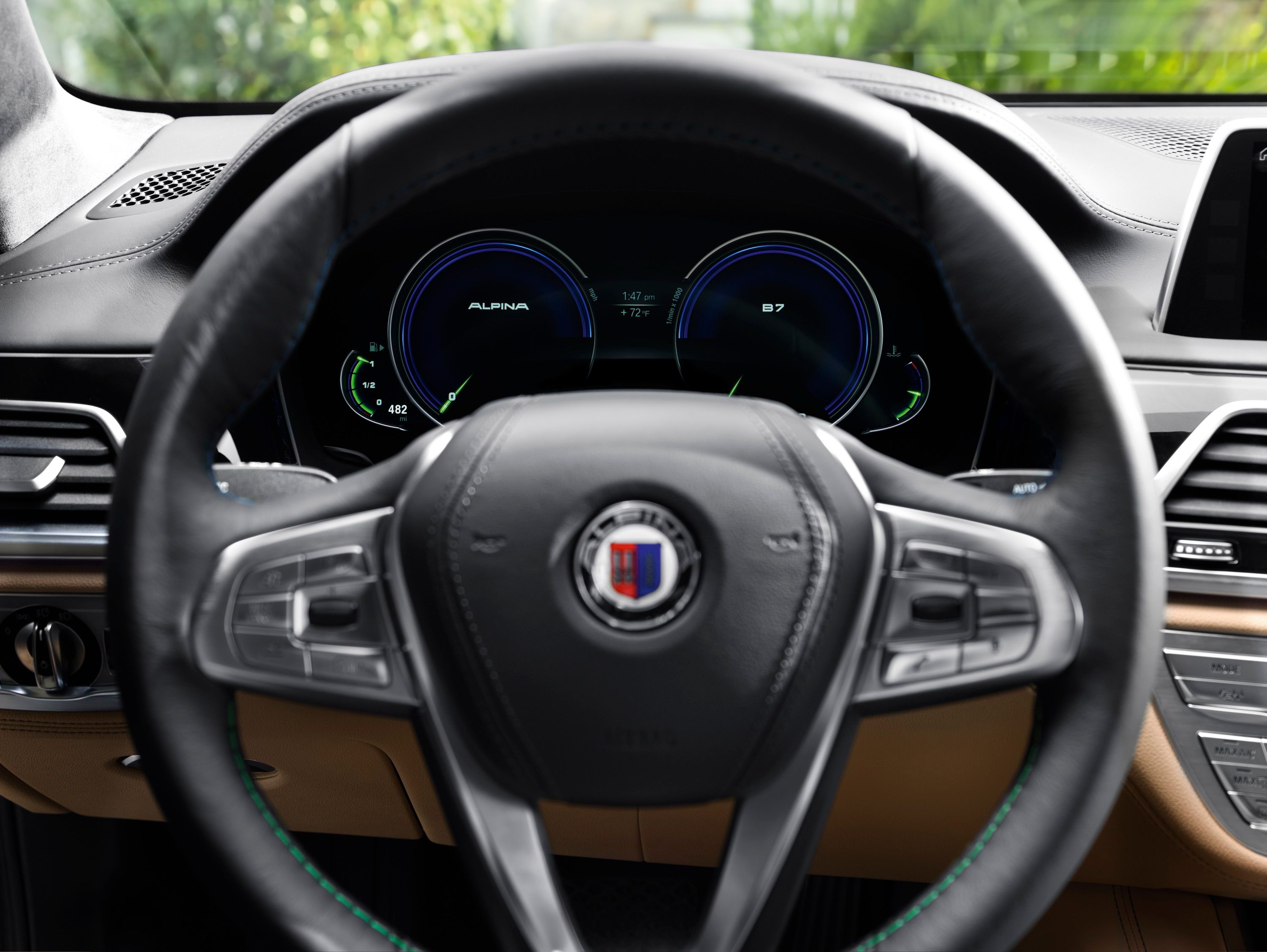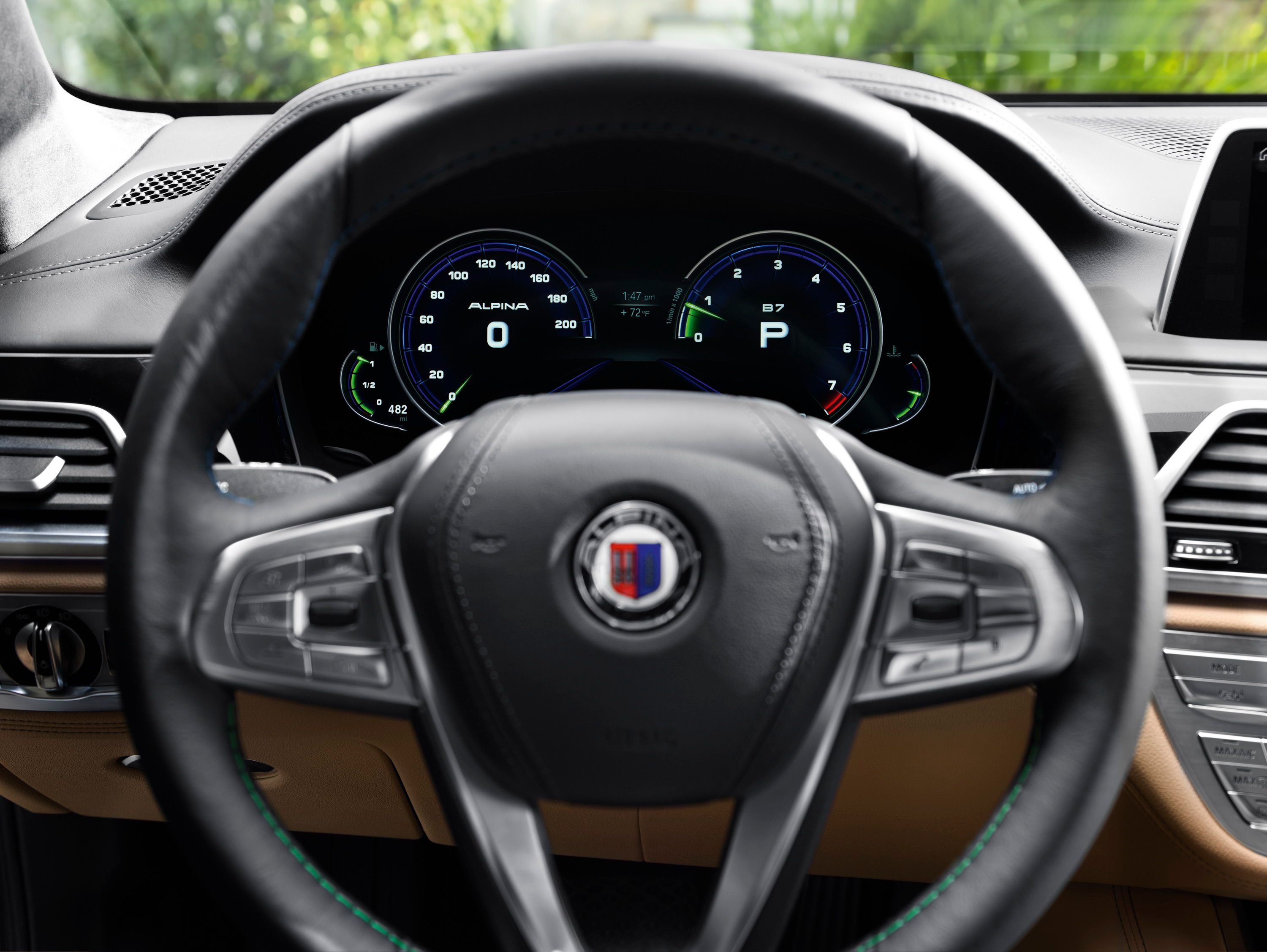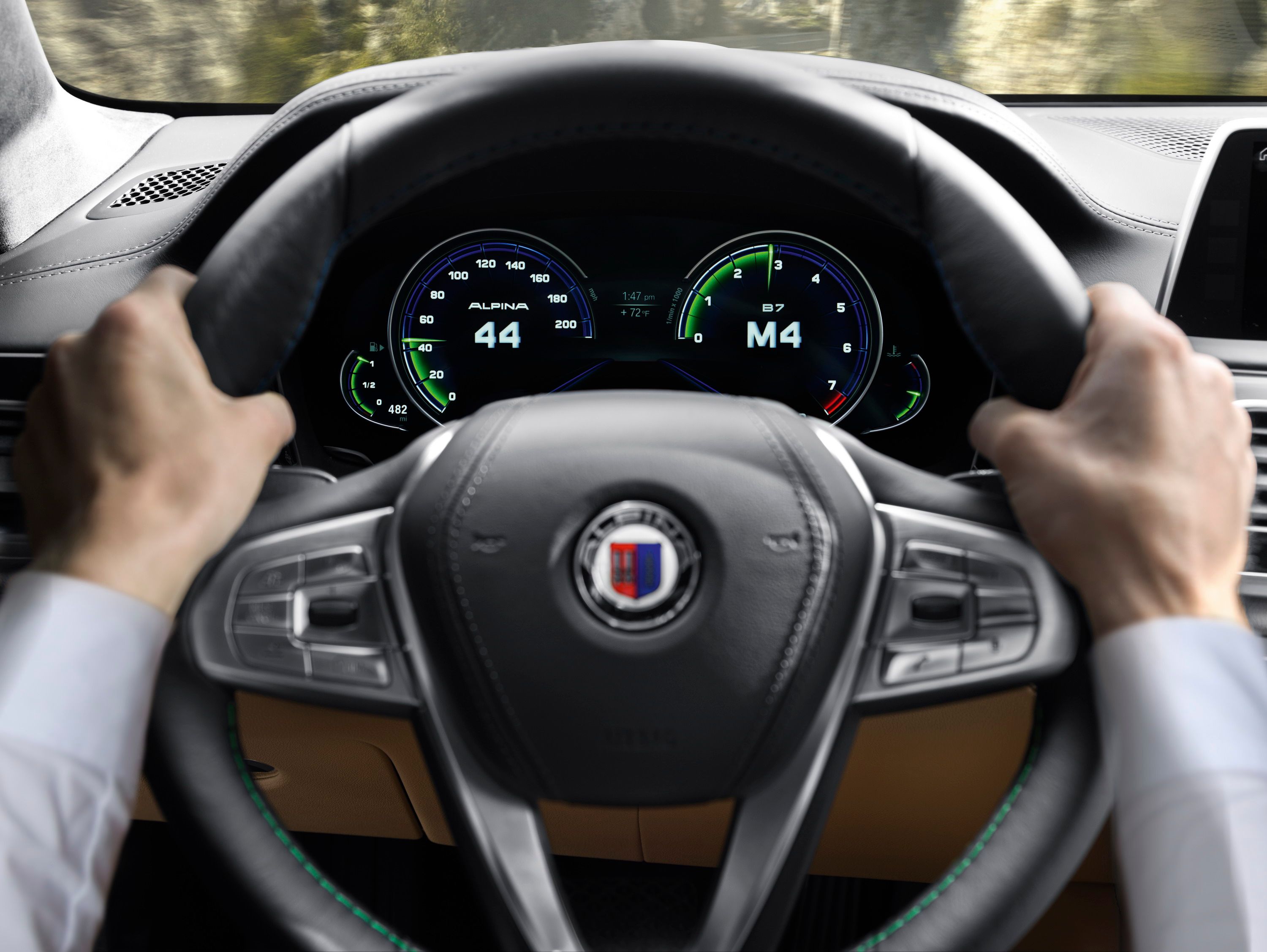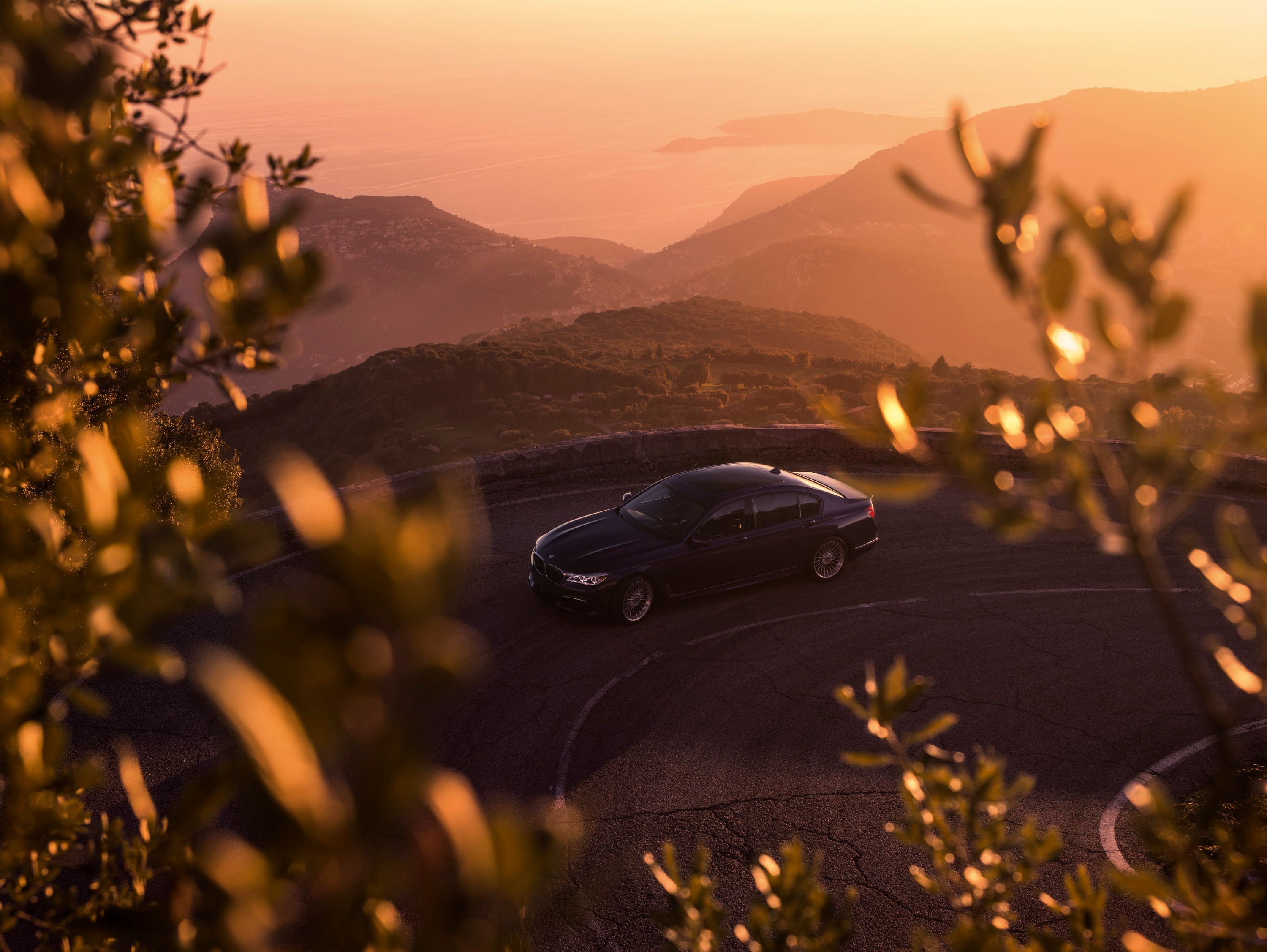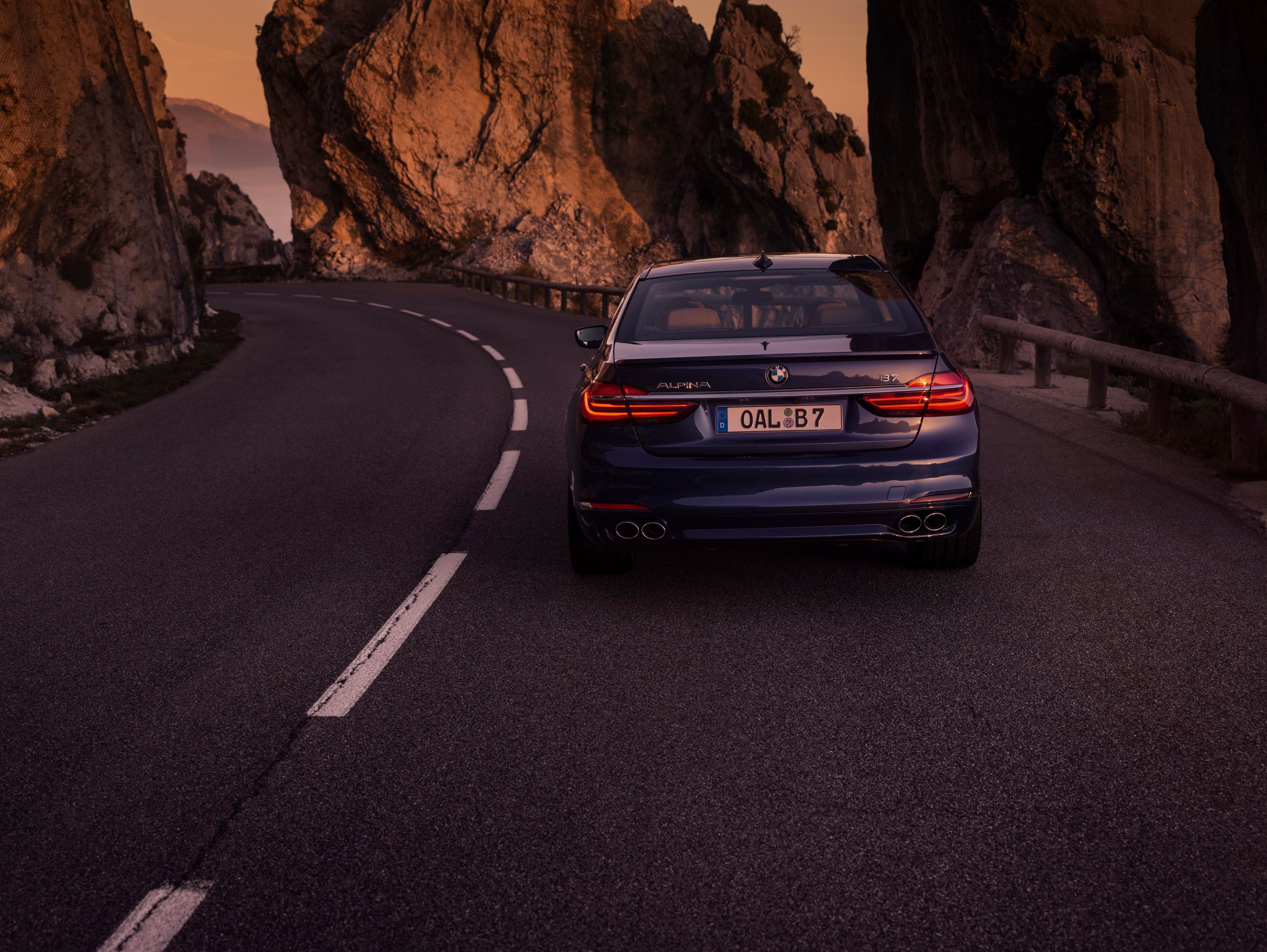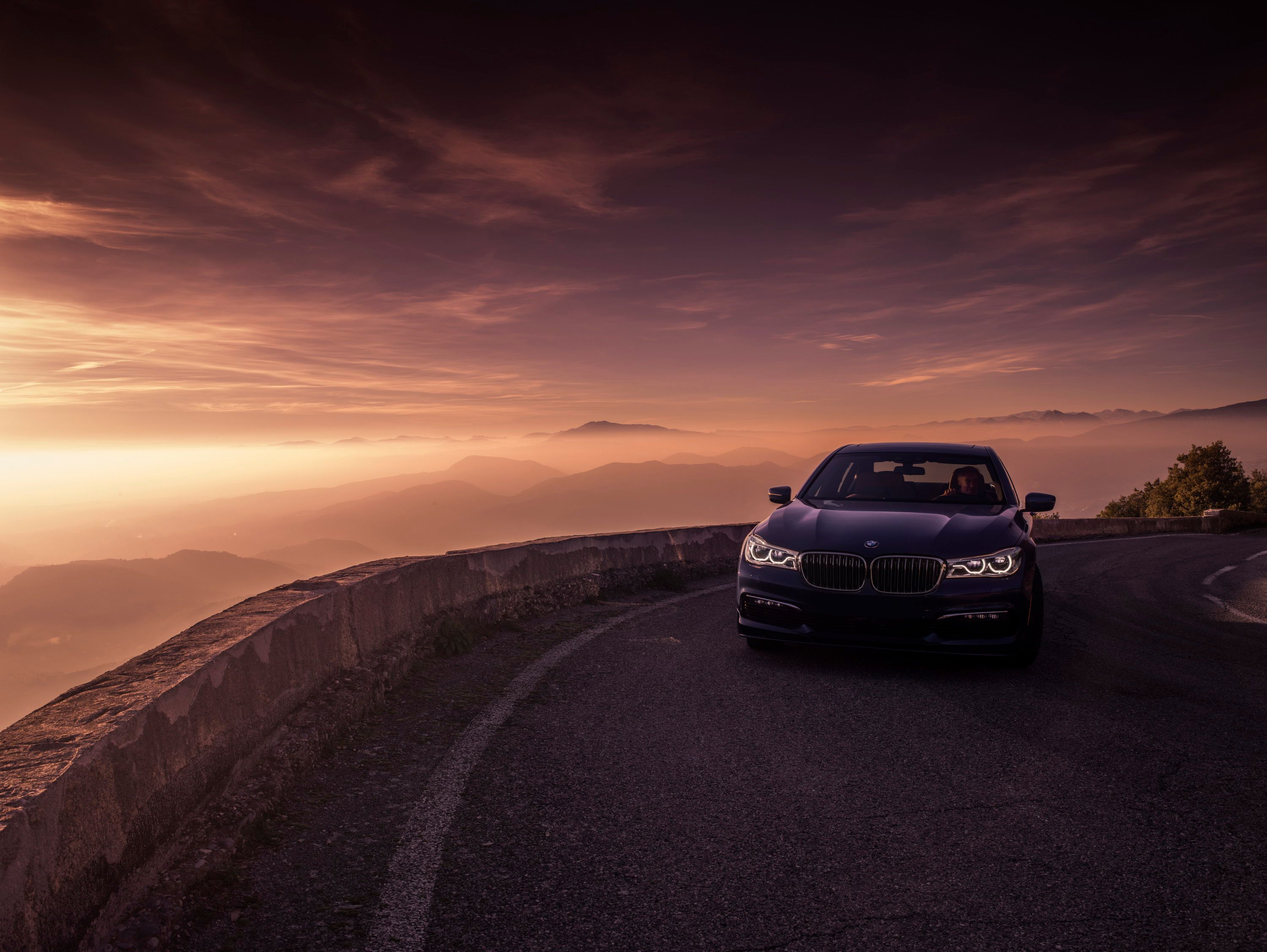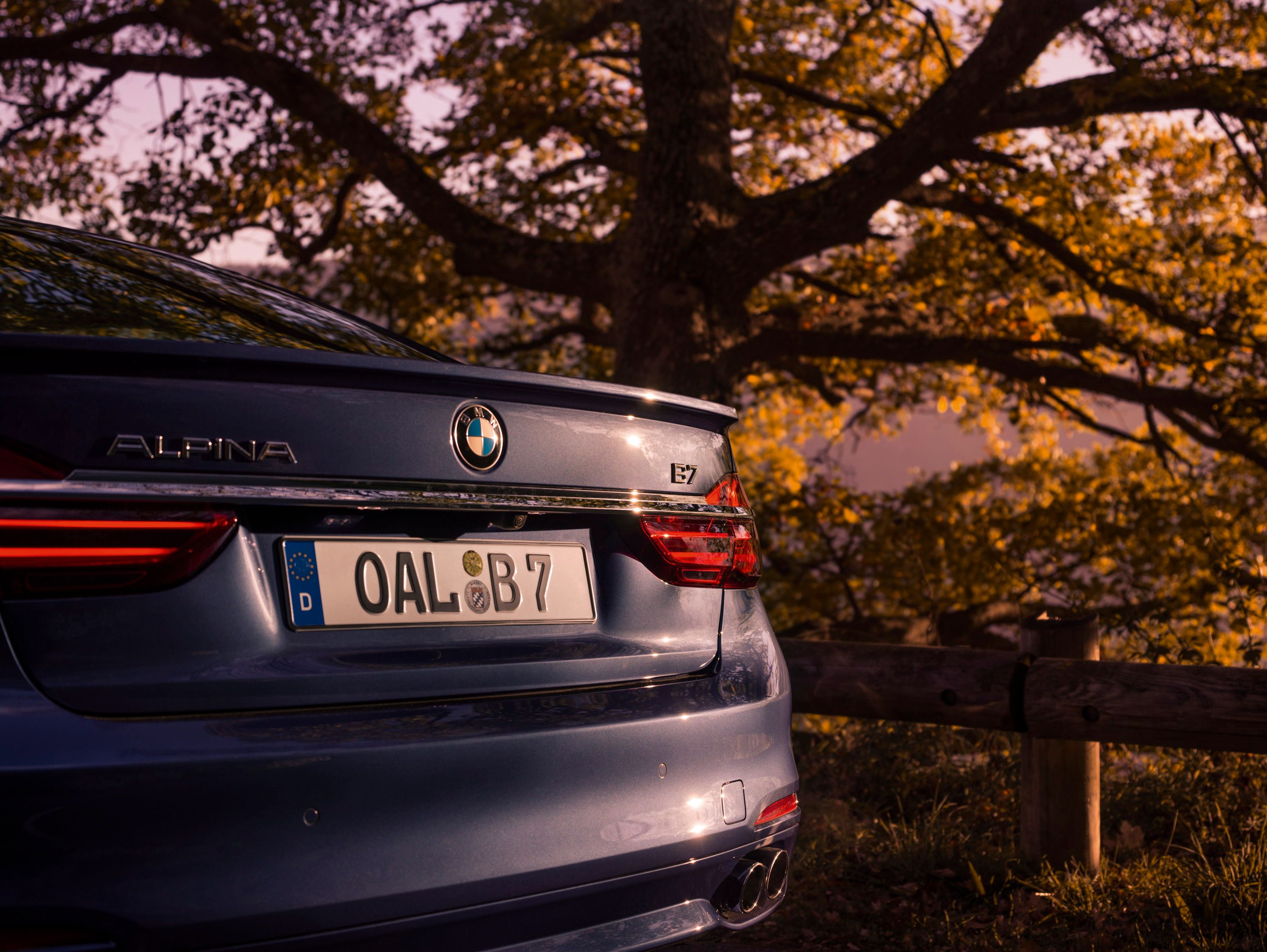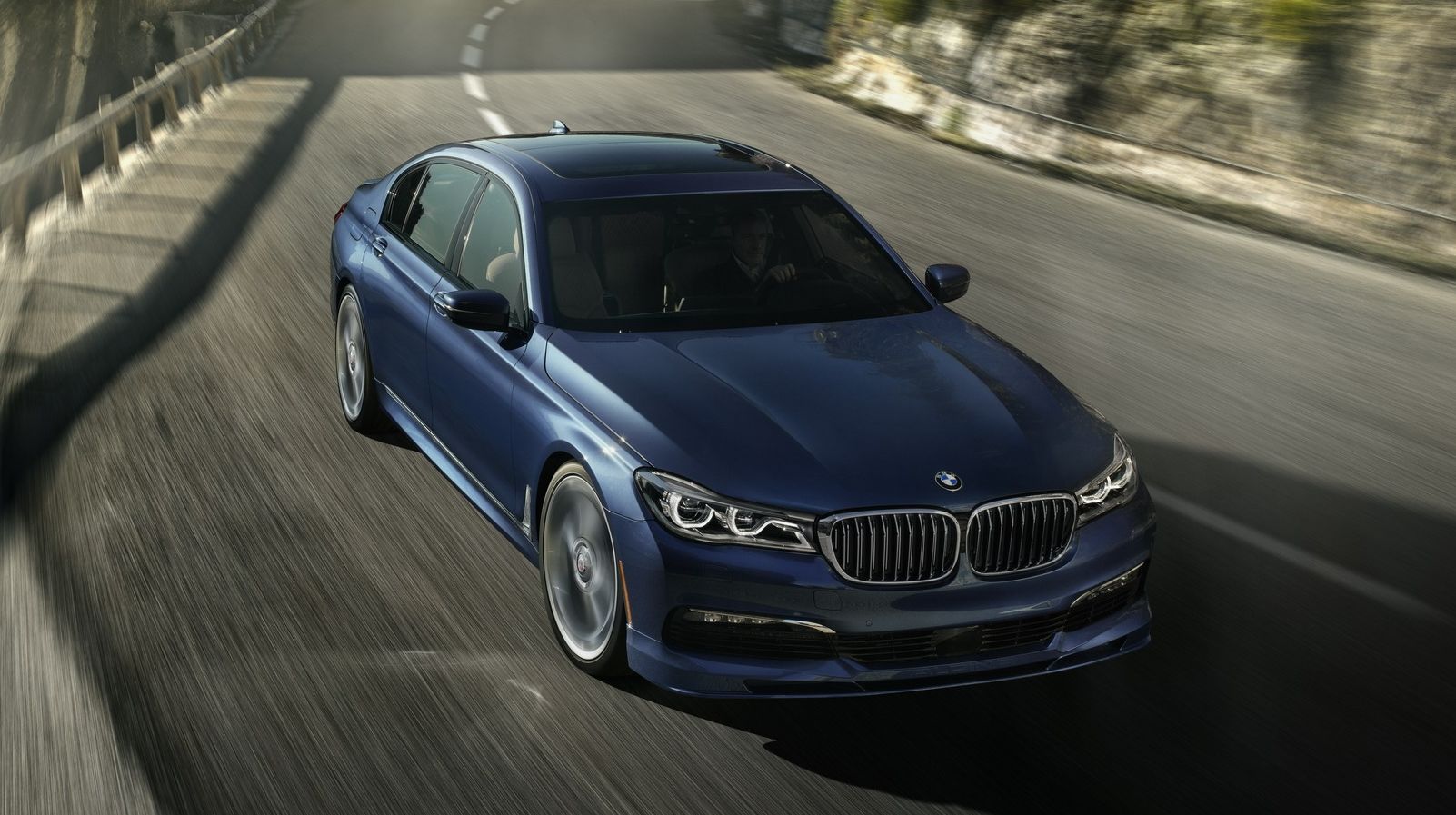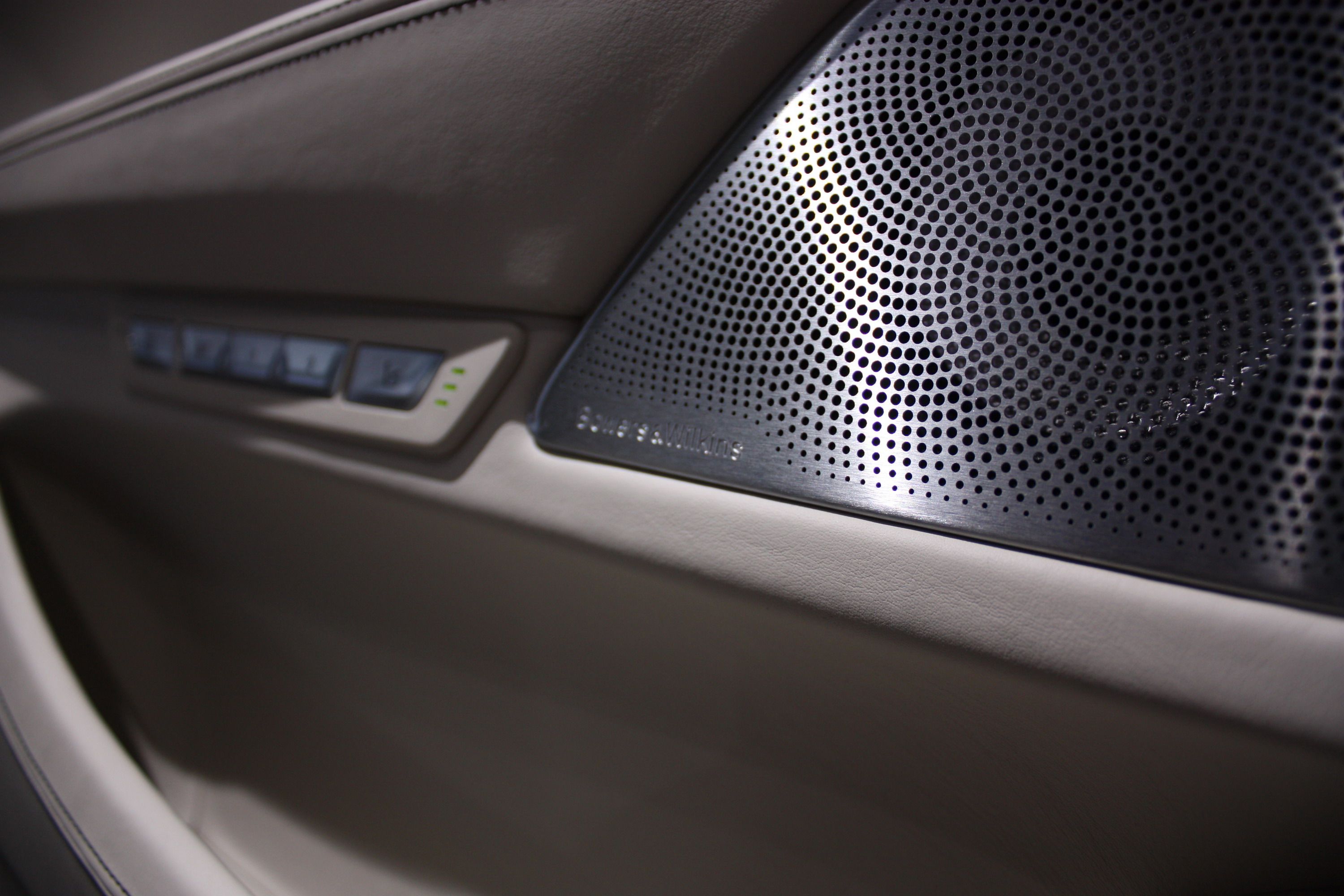In the world of performance, sport, and luxury, cars are always changing, with facelifts, redesigns, and new models debuting all the time. Today, it's the all new, 2017 BMW Alpina B7 xDrive – the third generation Alpina->ke1232 based off of the BMW 7 Series. As with all Alpina models, it brings things like luxury, performance, and comfort together in one package.
The new B7 adds to the good looks of the 7 Series->ke323 with more aerodynamic qualities in the front and rear and brings a new generation, 4.4-liter, twin-turbo V-8 that is sure to pack plenty of horsepower and torque. In addition to those goodies, add in the all-wheel drive system, adjustable suspension, and numerous driving modes, and you have luxurious performance at its finest. That’s what is so great about Alpina. It takes all the good from standard BMW->ke178 models, and in turn, makes the car that much better. Who can really argue with that?
The new Alpina B7 xDrive is scheduled to hit dealerships in September of this year, but BMW of North America has already released detailed information and a plethora of pictures to go along with it. So, now that the beans have been spilled, let's dive in and take a look at the new Alpina xDrive.
Updated 03/22/2016: BMW announced that the all-new Alpina B7 xDrive will be making its North American debut at the 2016 New York Auto Show and will arrive in U.S. showrooms in September 2016. Prices will be announced at a later date.
Continue reading to learn more about the BMW Alpina B7 xDrive.
2017 BMW Alpina B7 xDrive
- Make: Array
- Model: 2017 BMW Alpina B7 xDrive
- Engine/Motor: V8
- Horsepower: 600 @ 5750
- Torque: 590 @ 3000
- [do not use] Vehicle Model: Array
Exterior
Naturally, the B7 has the same basic look as the BMW 7 Series. Up front, the only real change is the front spoiler that is integrated with the front fascia as a lower lip. Otherwise, the air dam, fog lights, headlights, iconic kidney grille, and hood are all from the 7 Series. That isn’t a surprise, though, as that tends to be the norm from Alpina. Besides, why fix something if it isn’t broken?
The B7 rides on 20-inch, Alpina Classic, 20-spoke wheels that are wrapped in Michelin Pilot Super Sport tires measuring 255/40ZR20 in the front and 255/35ZR20 in the rear. Optionally, 21-inch, forged, Alpina Classic wheels with visible wheel bolts are also available. When the B7 is set into Alpina Sport+ driving mode, or at speeds above 140 mph, the two-axle air suspension lowers the body by 0.8 inches, making the car more aerodynamic and improving the overall stance of the car. The lowered body height in combination with the Alpina Classic wheels gives the B7 an intimidating stance and a sporty look.
Around back Alpina got rid of the chrome trim around the twin, dual exhaust pipes, and extended the pipes through the rear fascia. In addition, Alpina also added a small spoiler to the deck lid. And that is the extent of the changes to the exterior. It isn’t much when you think about it, but these little changes were enough to give the B7 the Alpina touch. These changes really aren’t much, but they are just enough to give the car the Alpina touch.
Interior
The inside of the Alpina B7 is filled with fine Lavalina leather and ceramic inserts. The top of the dash is covered in leather, just like the 7 Series, but the bottom of the door trim and the carpets are black. This really adds appear to the beige coloring of the lower dash, seats, center console, and center door trim. The same infotainment screen and gear shifter carry over from the 7 Series. The leather steering wheel has blue and green stitching, and the bottom spoke is color matched to the trim around the buttons on the left and right spokes.
The instrument cluster features LED technology, and its display can change depending on what mode the B7 is currently in. For instance, in comfort more, round gauges are displayed that have the same layout as the instrument cluster in the 7 Series. It Sport mode, a different design is presented that has blue and green drag indicators and a centrally positioned digital speed read-out. On top of this, a full-color heads-up display helps to keep eyes on the road, while a backup camera is there to assist reversing maneuvers.
The technology, fine materials, new technology, and comfortable seats bring a passenger cabin that is visually inviting and looks to be quite comfortable as well. If I was going to be a taking a large sedan on a road trip, I think this car would be high on my list of acceptable chariots, just based on the interior alone.
Drivetrain
Finally, we make to my favorite part when it comes to Alpina vehicles – the heart of what makes an Alpina an Alpina. The 4.4-liter engine takes advantage of twin turbos, direct injection, and variable valve timing. The turbo system is unique, however, with the turbochargers positioned above the valley and between the heads of the V-8 engine. Specially designed for this unique placement, the turbos also have enlarged inlets and outlets – a package that helps to provide immediate throttle response, fast power build-up and lots of torque available at low engines speeds. To be more specific, the engine puts out 600 horsepower and 590 pound-feet of torque. At 2,000 rpm, the engine is already delivering 494 pound-feet.
All this power is sent to the all-wheel-drive system via an eight-speed automatic transmission with Alpina Switch-Tronic. On automatic driving mode, the transmission offers relaxed, luxurious cruising, while Sport Mode brings shift points that are optimized for performance. Manual mode allows shifting from the Switch-Tronic buttons on the steering wheel. This driving mode allows driver controlled shifting at all times – the transmission will remain in the selected gear until the driver shifts, even with the engine hitting the rev limited. According to Alpina, shift time between gears in manual mode takes about one-tenth of a second.
Alpina also went the distance to help cool down the air before it is delivered to the cylinders. The intercooler system was designed without bottlenecks and a large-volume core. In addition, an indirect intercooler system – air to water – is used for short charge-air paths. Mahle pistons and NGK spark plugs are used to ensure optimal performance from the 20 psi of boost pressure generated by the twin turbo system. To cut down exhaust back pressure and weight, the B7 is equipped with an Alpina stainless steel sports exhaust system. The sound of the exhaust changes with driving mode via a number of active exhaust valves.
All of this comes together to push the B7 xDrive to 60 mph in just 3.6 seconds on its way to an estimated top speed of 193 mph. For comparison purposes, the current B7 Biturbo Saloon has 540 horsepower, 538 pound-feet of torque and hits the 62 mph dash in 4.5 seconds. That means the new B7 has 60 more ponies, puts out two more pound-feet of torque, and gets to 60 mph 0.8-seconds faster than the current model. Not a bad improvement in the performance department.
Suspension and Steering
According to Alpina, the Xdrive ”features cutting-edge suspension technology that presents an exceptional range of driving experiences.” The car rides upon a two-axle air suspension system that has dynamic damper control and active comfort drive. Active roll stabilization also helps cut down on body roll during harsher maneuvers. The suspension can be adjusted via the various driving modes. At speeds of up to 20 mph, the suspension can be adjusted to lift the body by 0.8 inches. When in Sport+ mode, the body will lower by 0.8-inches. Likewise, the body will lower automatically any time the vehicle reaches 140 mph to increase the overall aerodynamics of the car. Electronic dampers are able to change the rebound and compression capabilities of the suspension, allowing for a stiffer, sportier ride in sport modes and a soft, comfortable ride in lesser modes.
In addition to this suspension system, The B7 xDrive also features Integral Active Steering. This system allows the wheels in the rear to turn by a maximum of three degrees in either direction at lower speeds. At lower speeds the rear-wheel steering is active to increase handling capabilities and agility. At higher speeds, however, this system is deactivated to supply better stability. I’ve never been a fan of rear wheel steering, but at lower speeds, it does make cornering and mild maneuvers a breeze.
Prices
For now, BMW and Alpina are keeping a tight lid on the pricing of the new B7. In the press release that announced the new B7, it was disclosed that pricing will be announced closer to market launch. So, for now, we just have to guess and wait. We know the current Alpina B7 Biturbo starts out at €147,300 or $164,902 at current exchange rates. A small price hike isn’t out of the question, so expect the new B7 to go for €150,000 or about $168,000.
Competition
Jaguar XJ
When it comes to high-dollar, luxury sedans, Alpina has to compete with brands like Audi and Jaguar, which brings me to the new B7’s first competitor – the 2017 Jaguar XJR. Set to go on sale This spring, the XJR has been redesigned and comes in a number of trim levels. The XJR just happens to be the right size and falls into the right category to compete with the B7. The XJR comes with a 5.0-liter, supercharged V-8 that produces 550 horsepower and 680 pound-feet of torque. That might be 50 horsepower shy of the new B7, but it makes up for it in the torque department, offering 90 pound-feet more at just 3,500 rpm. Like the B7, the XJR routes that power to the wheels through and eight-speed automatic transmission. The benefit of going with the XJR is the price. It starts out at $118,000 riding on a standard wheelbase, or $121,000 if you go for the long wheelbase model. That’s a pretty significant discount for an increase in torque and a sacrifice of 50 horsepower.
Read our full review on the Jaguar XJ here.
2016 Audi S8 Plus
The new B7 is bringing some firm competition to the segment, and it should compete well with the S8 plus. The S8 Plus comes with a 4.0-liter, V-8 that delivers 605 horsepower at 6,100 rpm and 517 horsepower at 1,750 rpm. In comparison to the new B7, that is just five horsepower more and 73 pound-feet shy of the B7. With over boost, the S8 Plus makes up some of that deficit with torque increased to 553 pound-feet at 2,500 rpm. Even without overboost, that 517 pound-feet kicks in at 250 rpm less than the B7, which isn’t a bad thing. The S8 Plus can hit the 60 mph sprint in 3.7 seconds, with top speed limited to 155 mph. As an option, that speed limiter can be increased to 190 mph is some markets. As a competitor the S8 Plus is a strong competitor, given the starting price of $114,900 – that’s roughly 50 grand less that the B7.
Read our full review on the 2016 Audi S8 Plus here.
Conclusion
Well, I’ve always been a fan of BMW, so naturally, I am also a fan of Alpina. I still like to think of Alpina as just a tuner, since its models are based so heavily on BMW models. It is important to remember that it is considered a manufacturer by the German Ministry of Transport, though. That said, I love the way Alpina builds on BMW and makes the car just a little bit better than the standard BMW models. Of course, that comes at a premium, but part of that premium pays for the Alpina name as well. When it comes to the new B7, I’m excited about that new, digital instrument cluster and all the work that went into the engine. The car is sleek, sexy and fast, and there is no doubt in my mind it will be highly desired when it hits showrooms later this year. Good job, Alpina. You never cease to amaze me.


